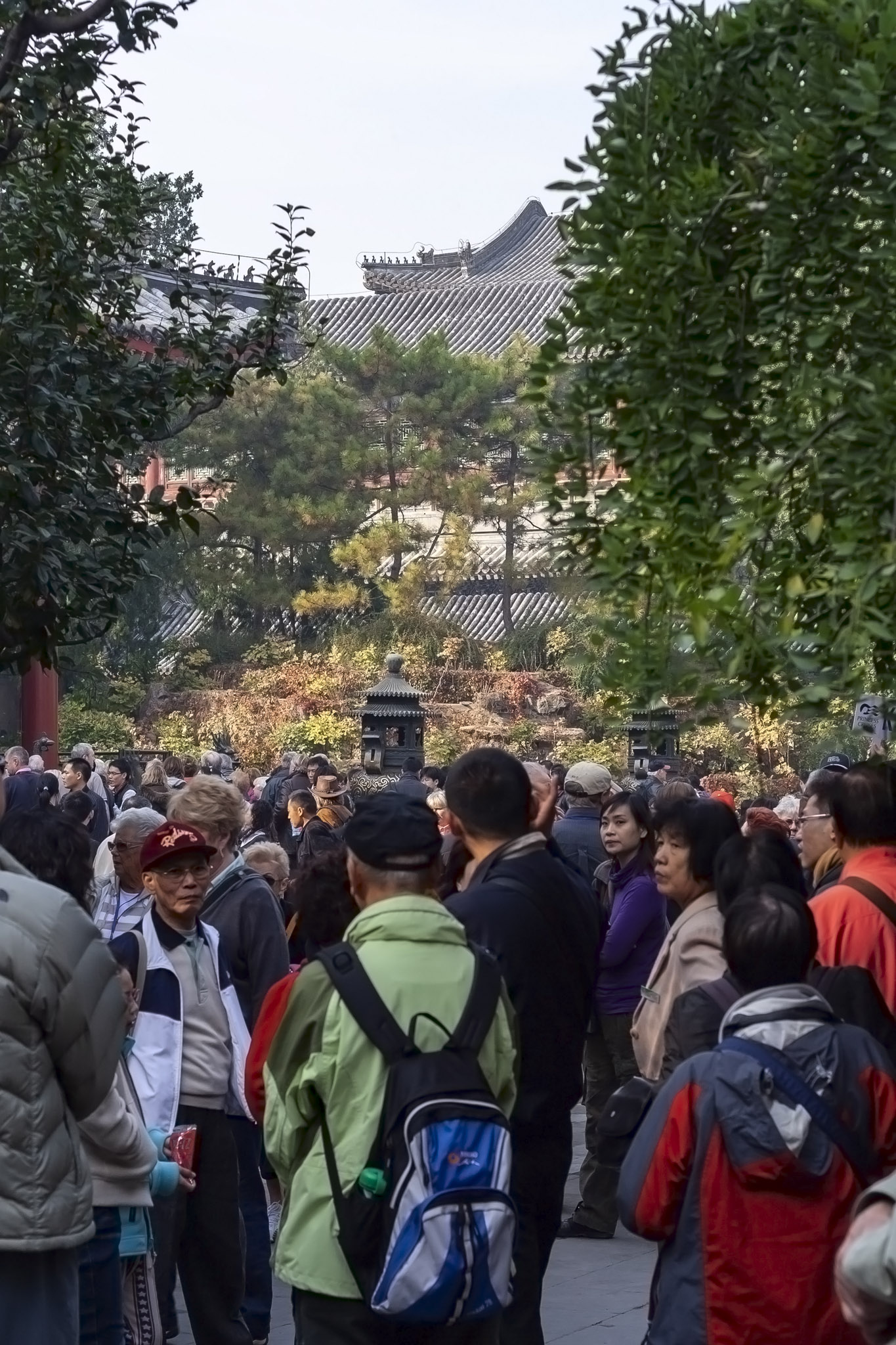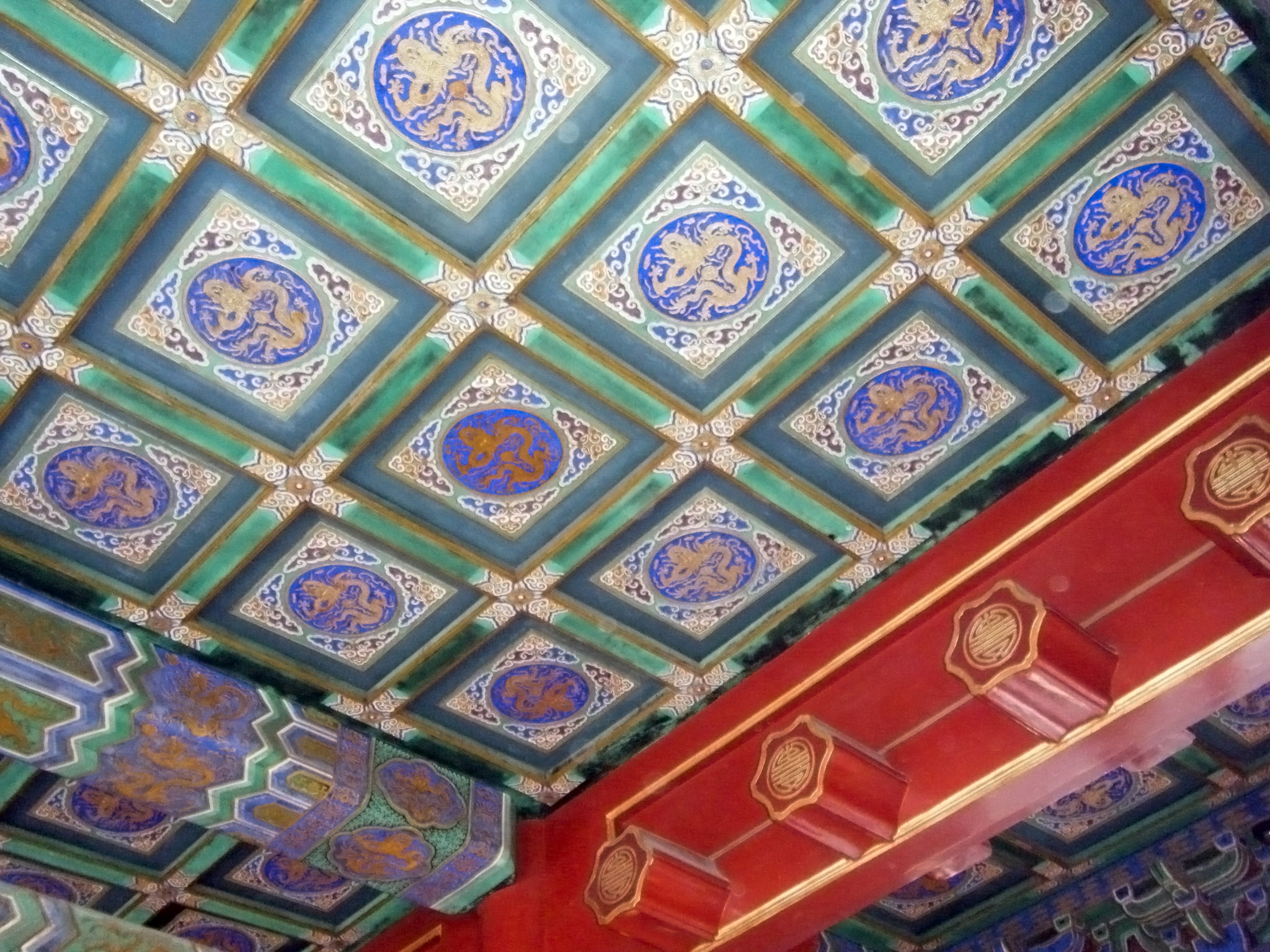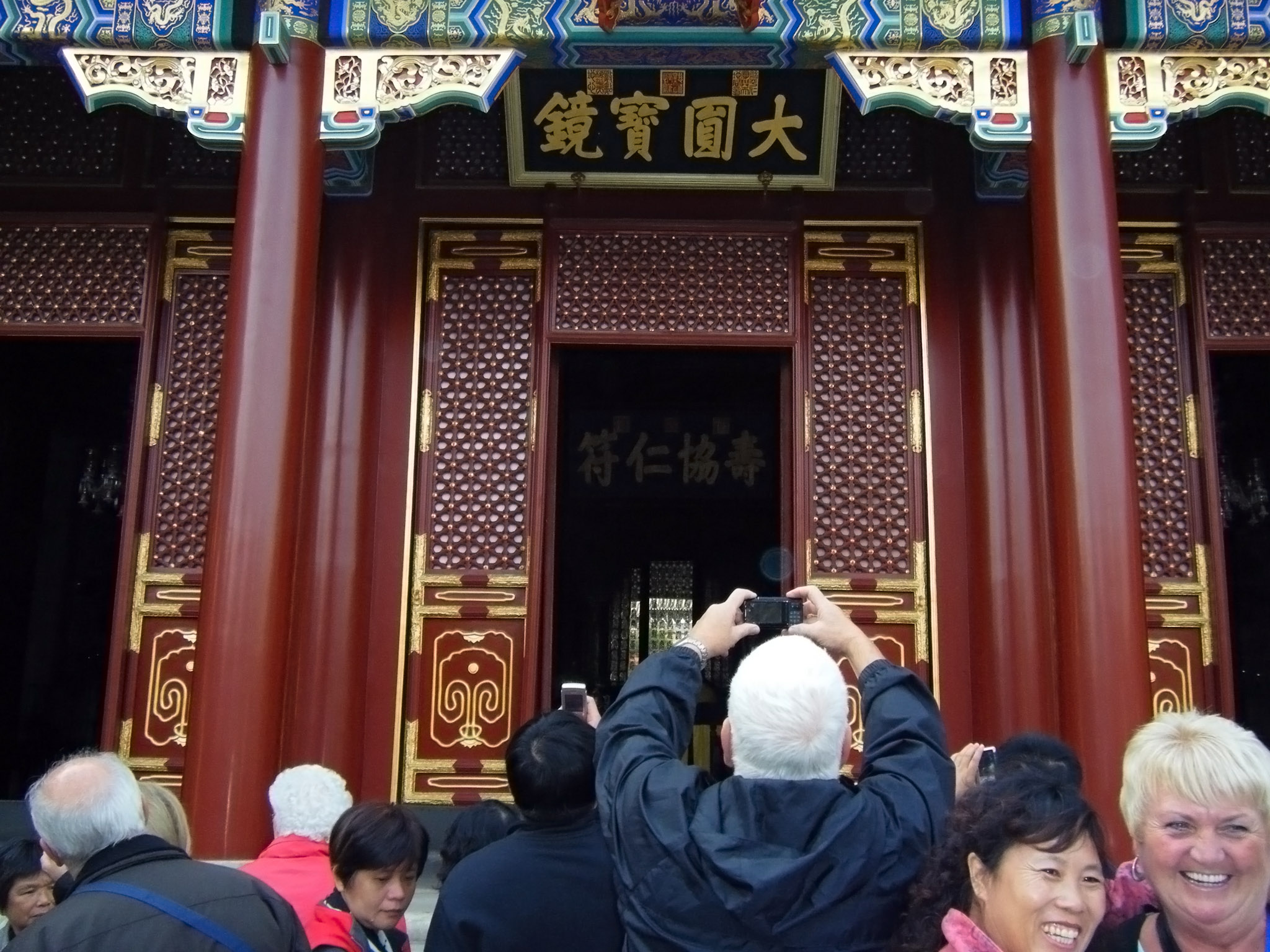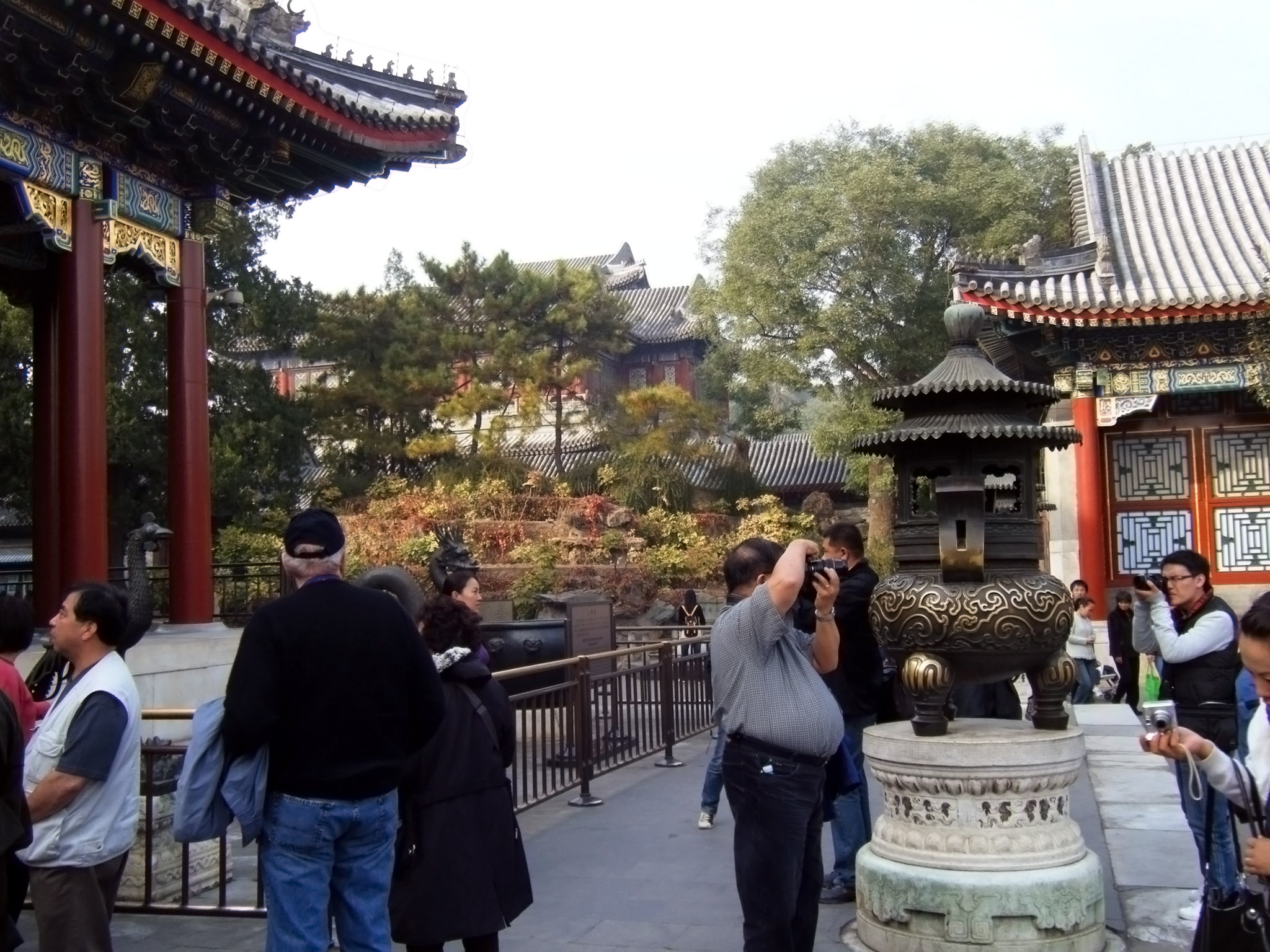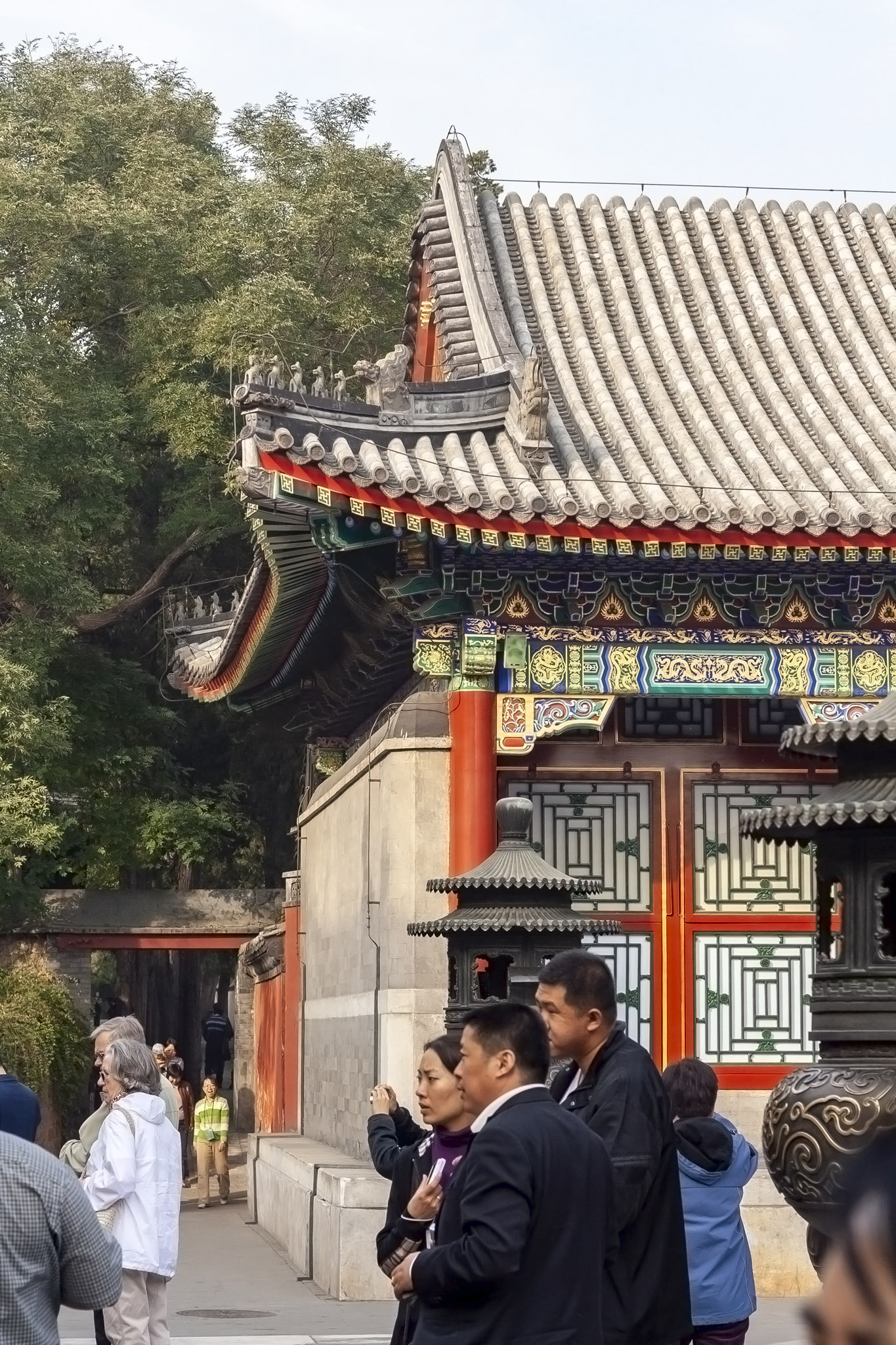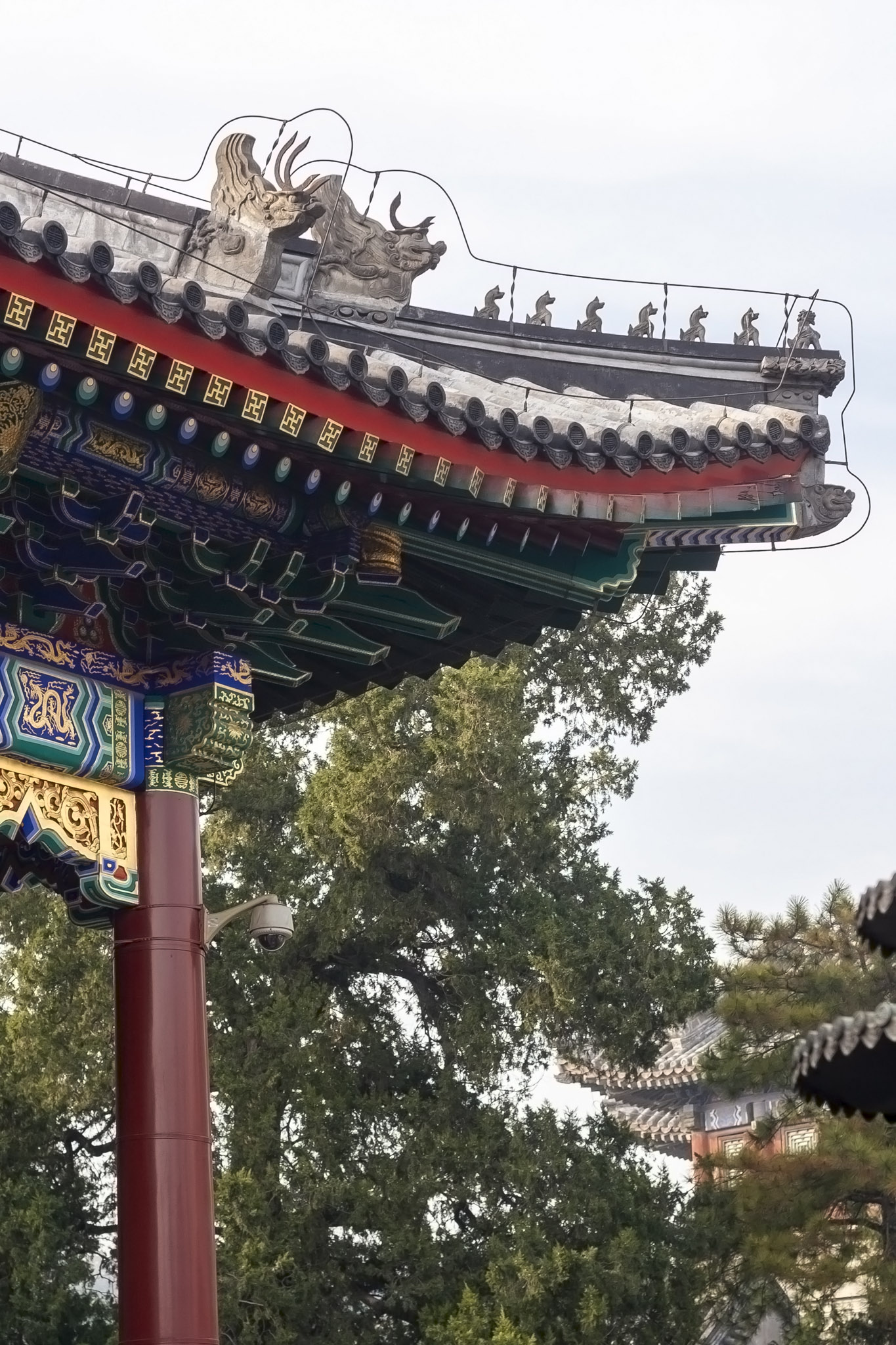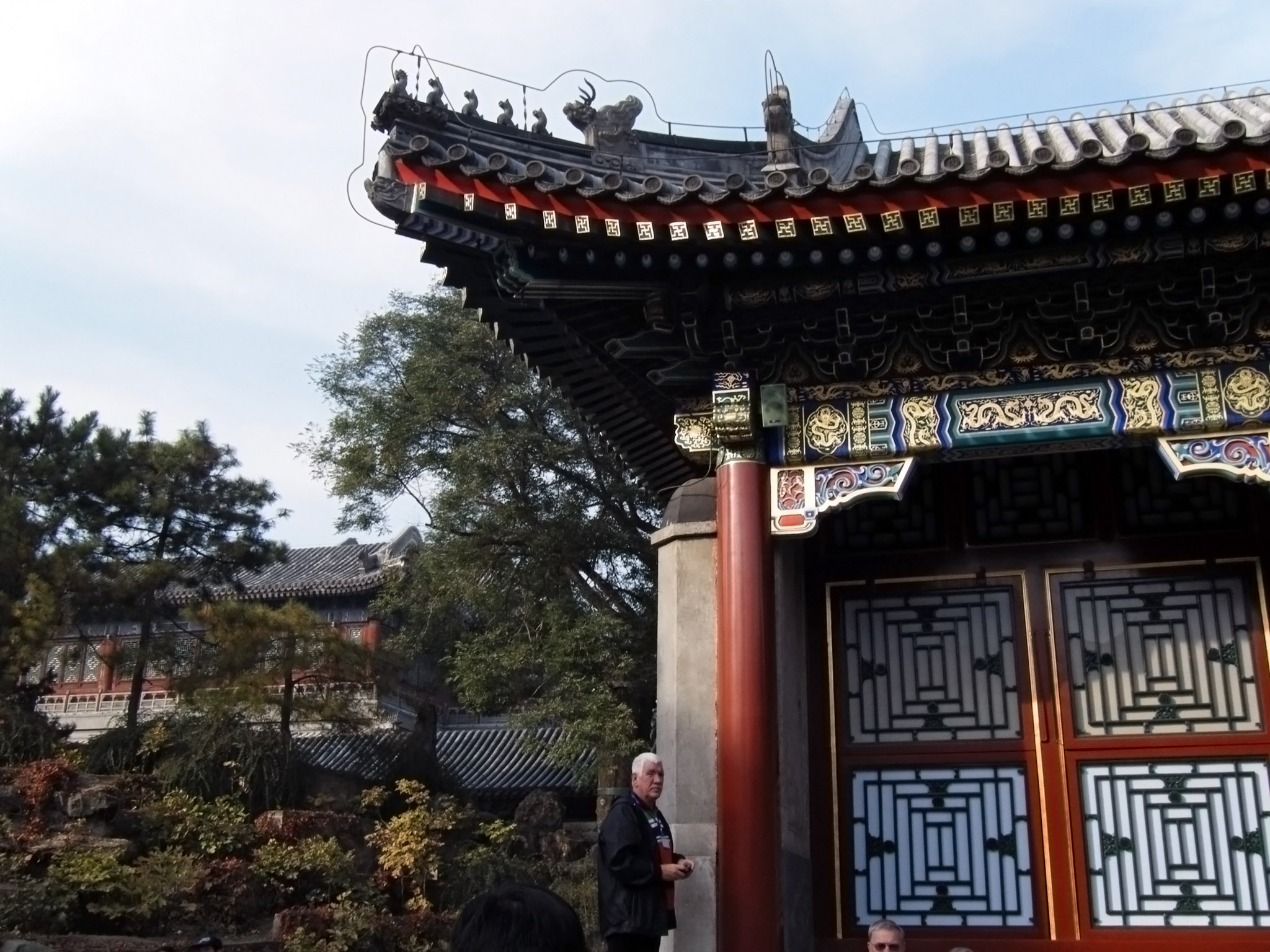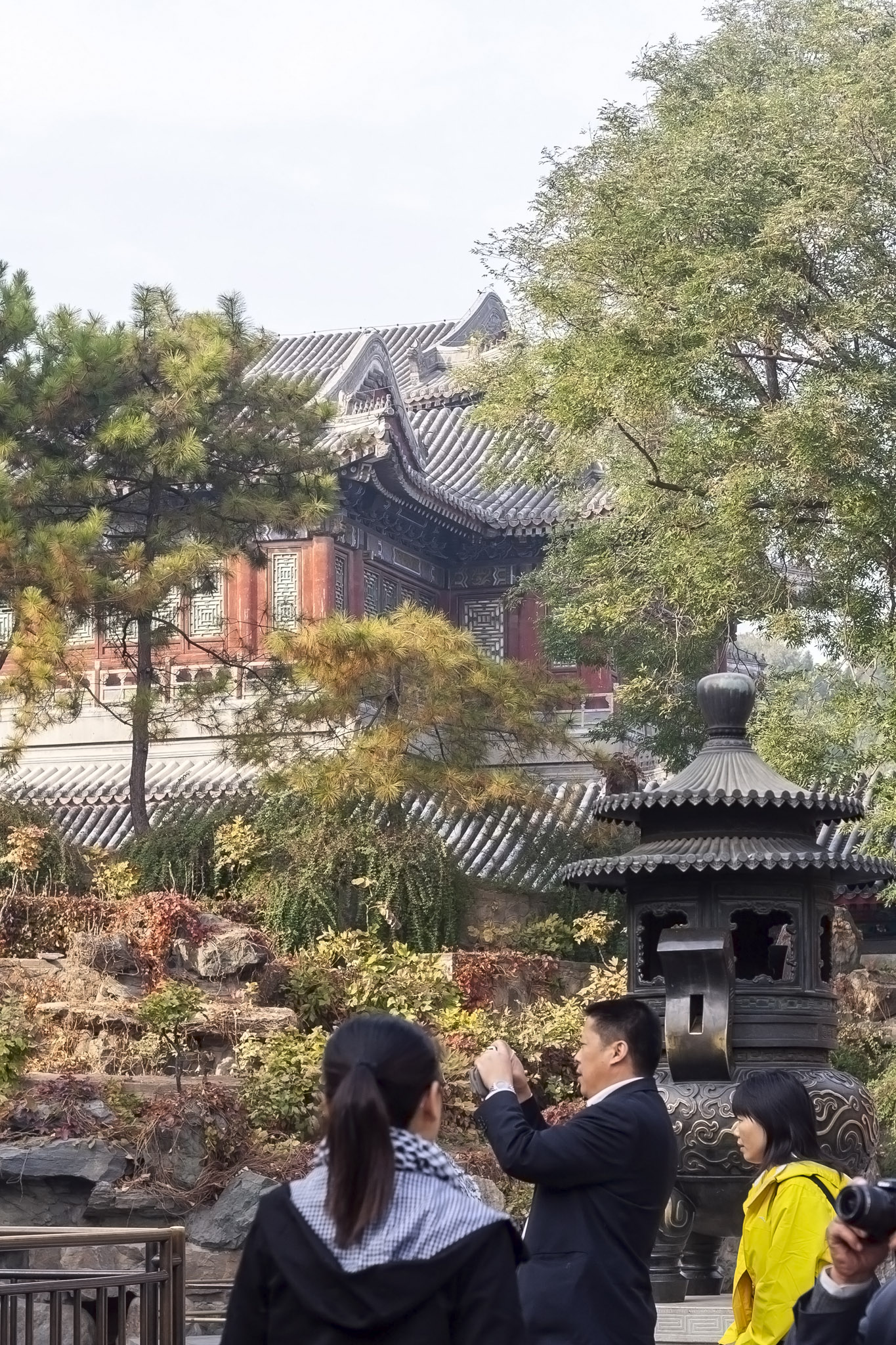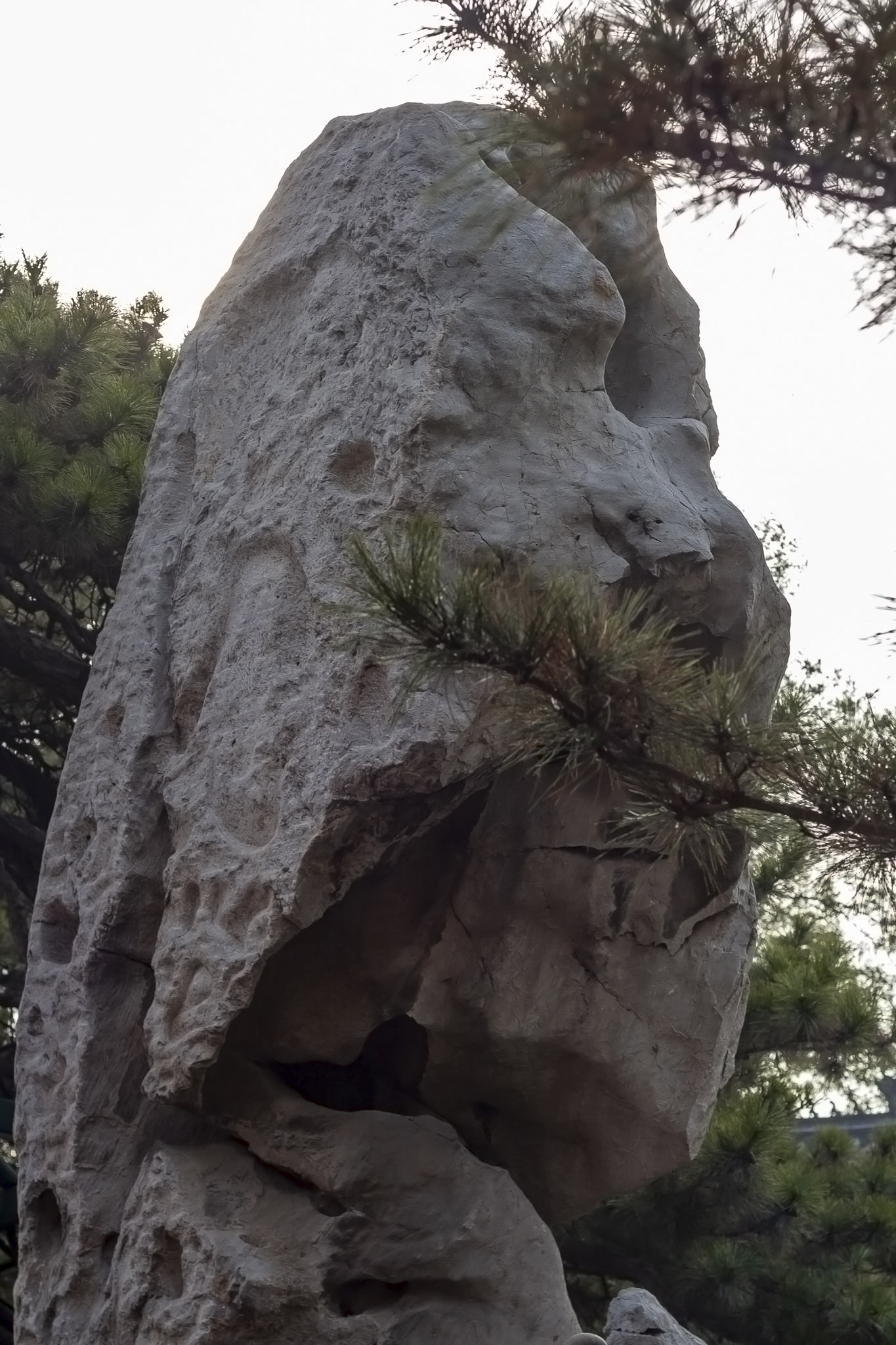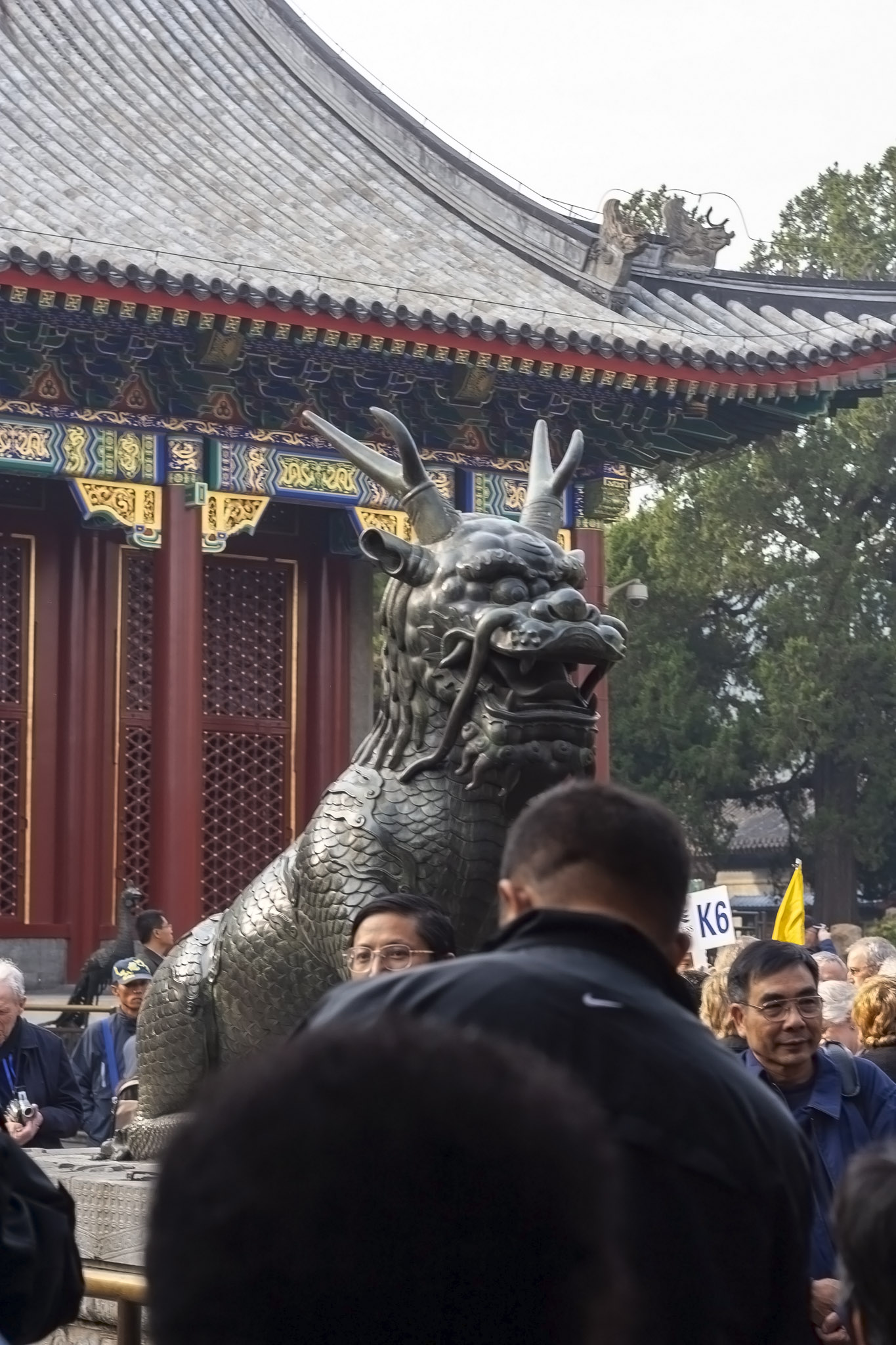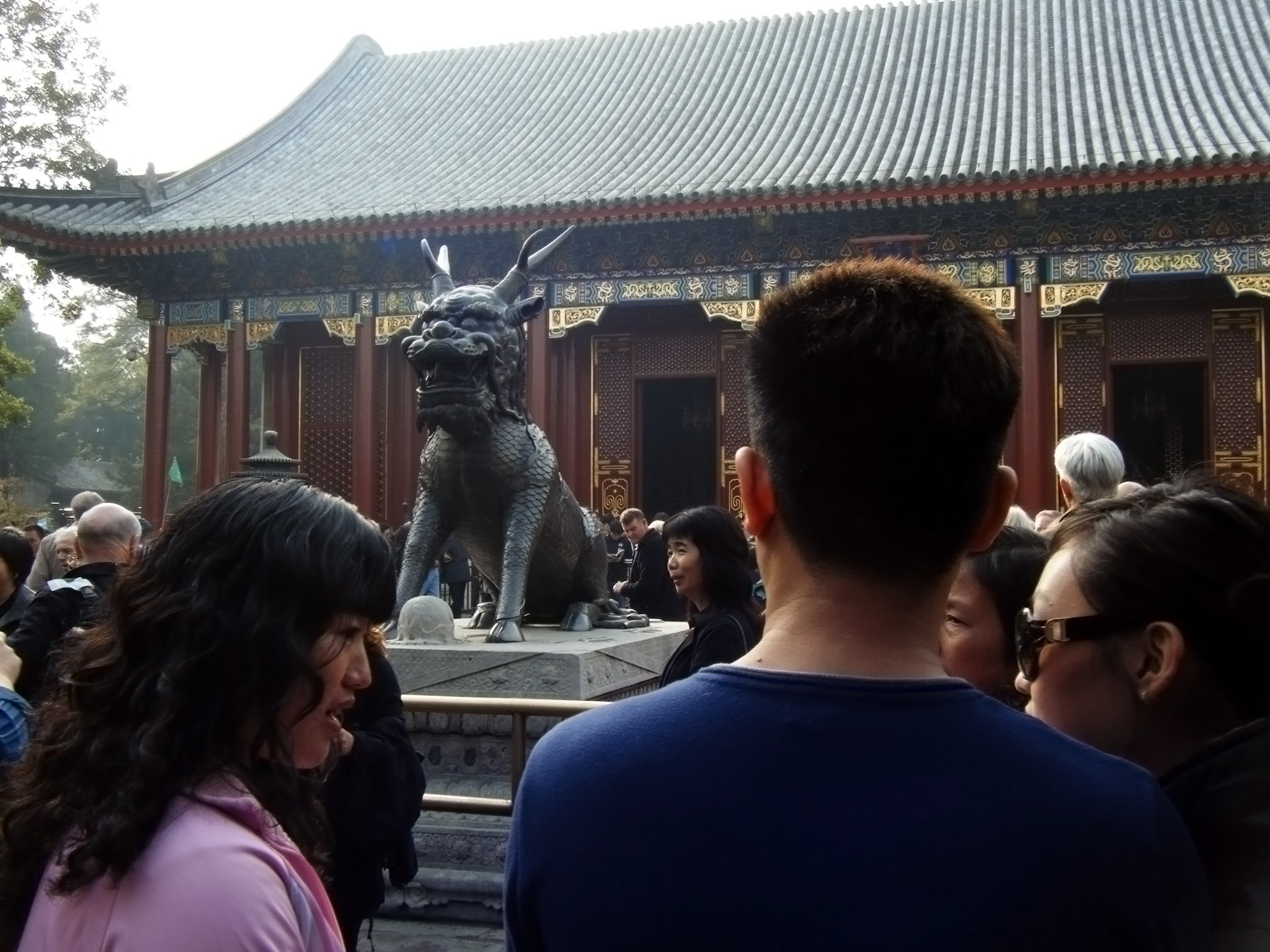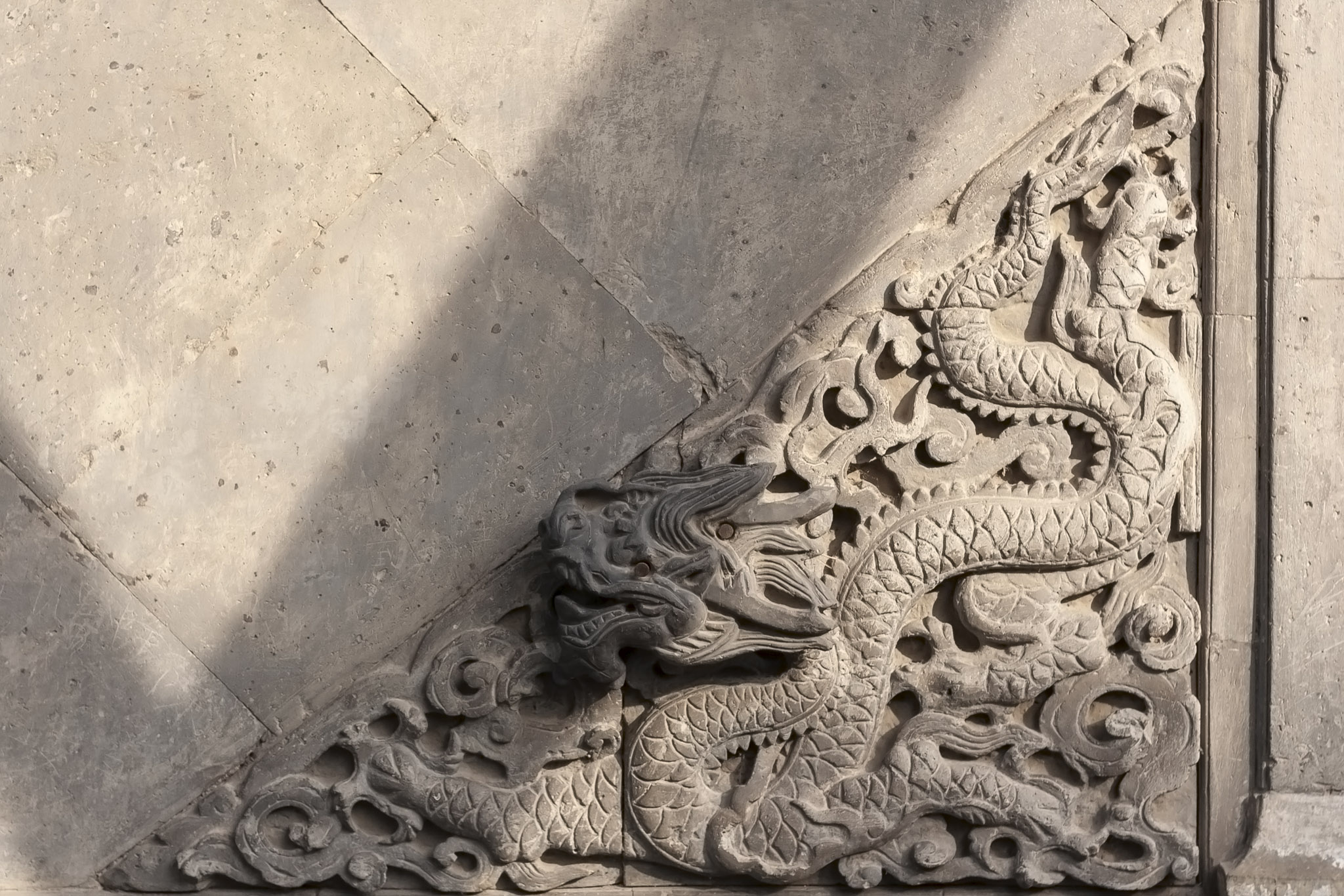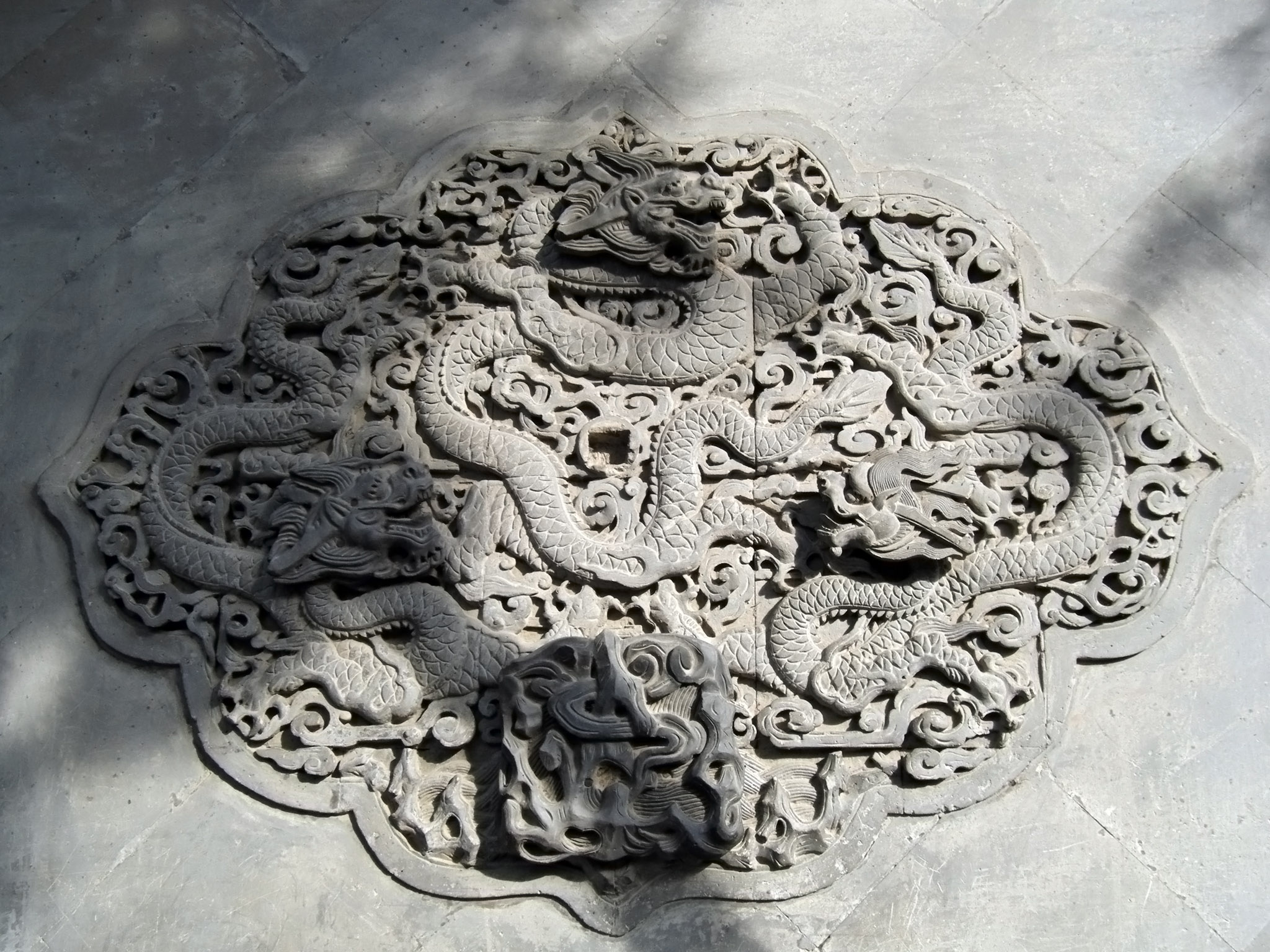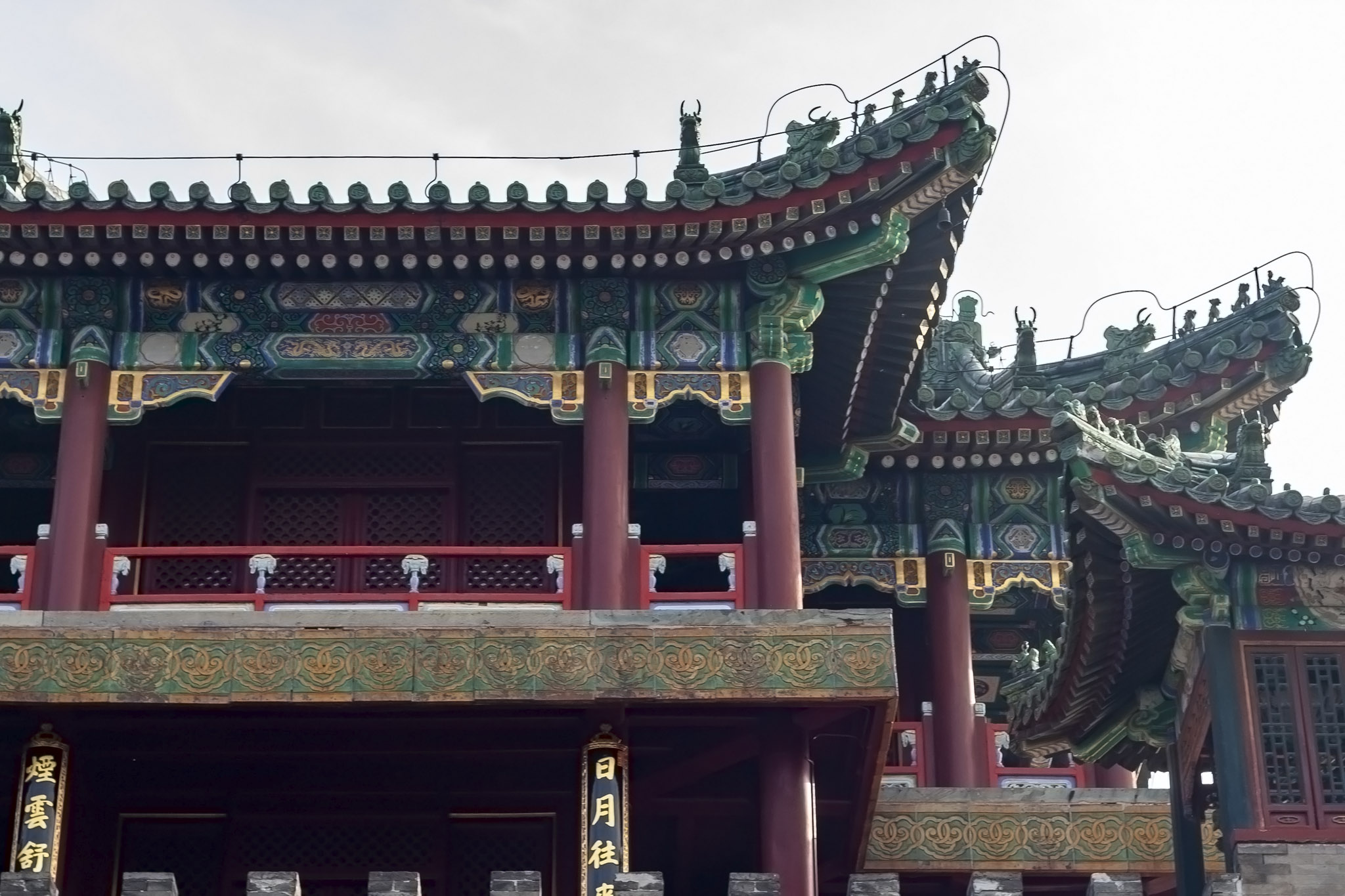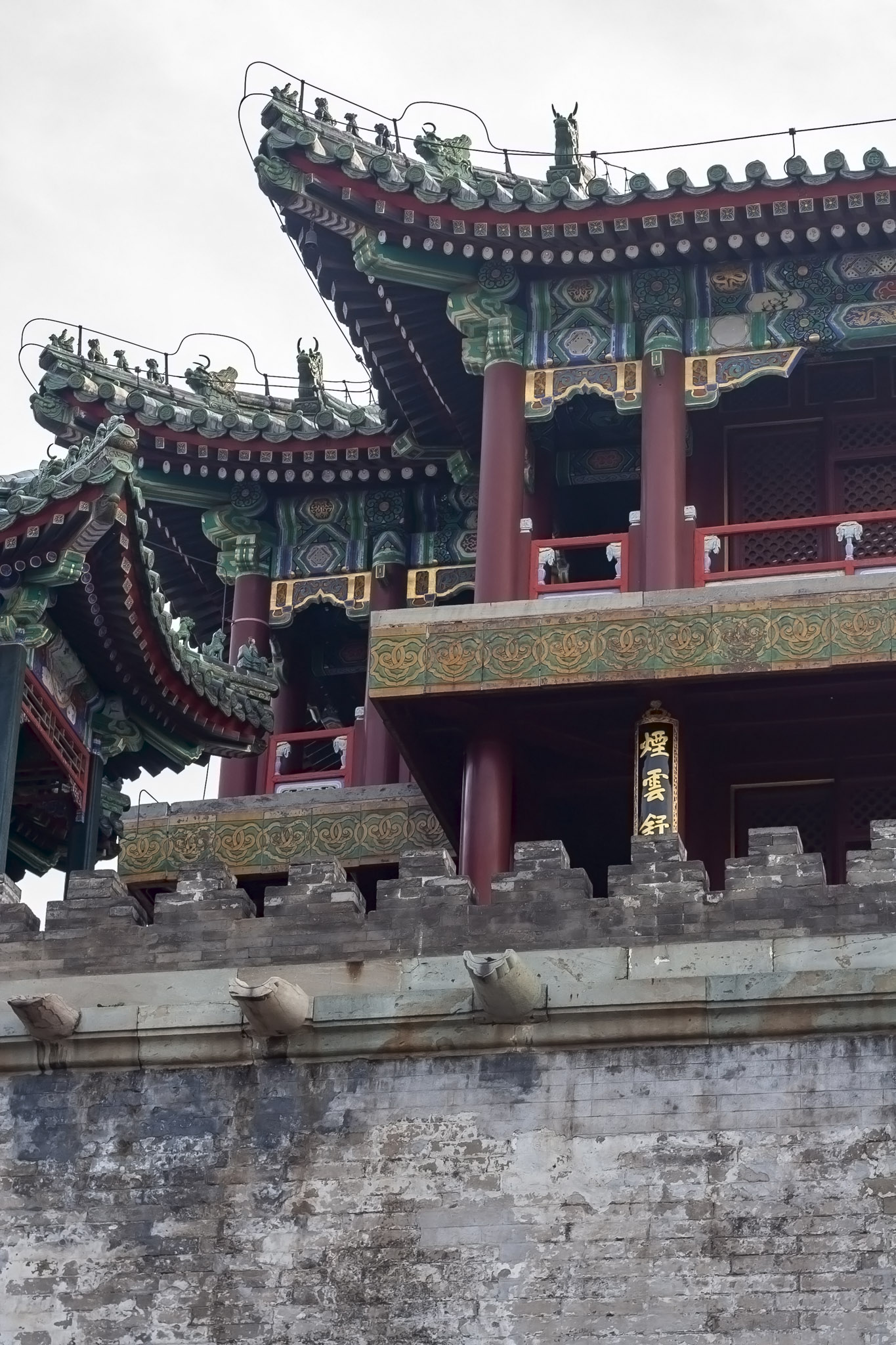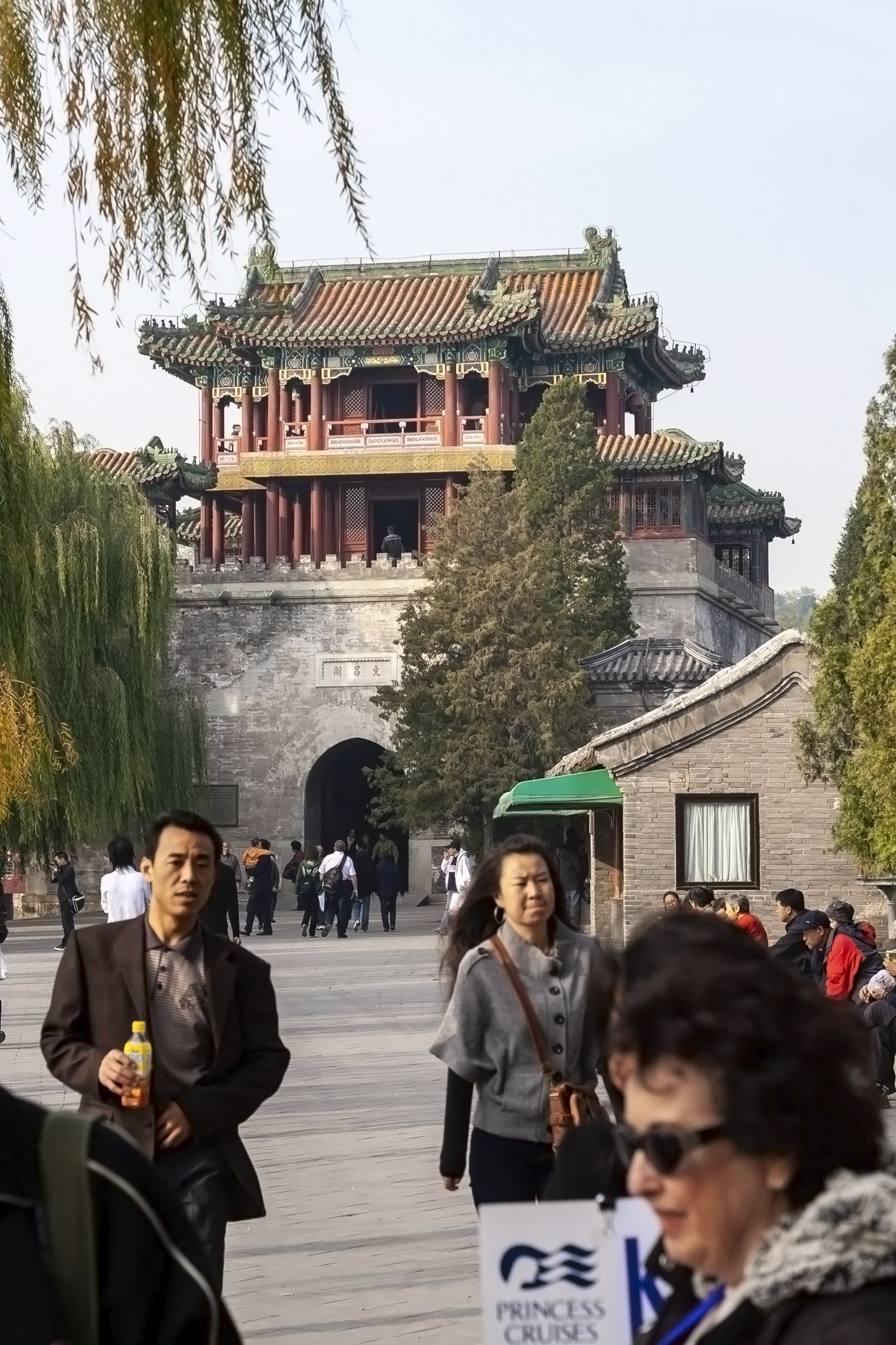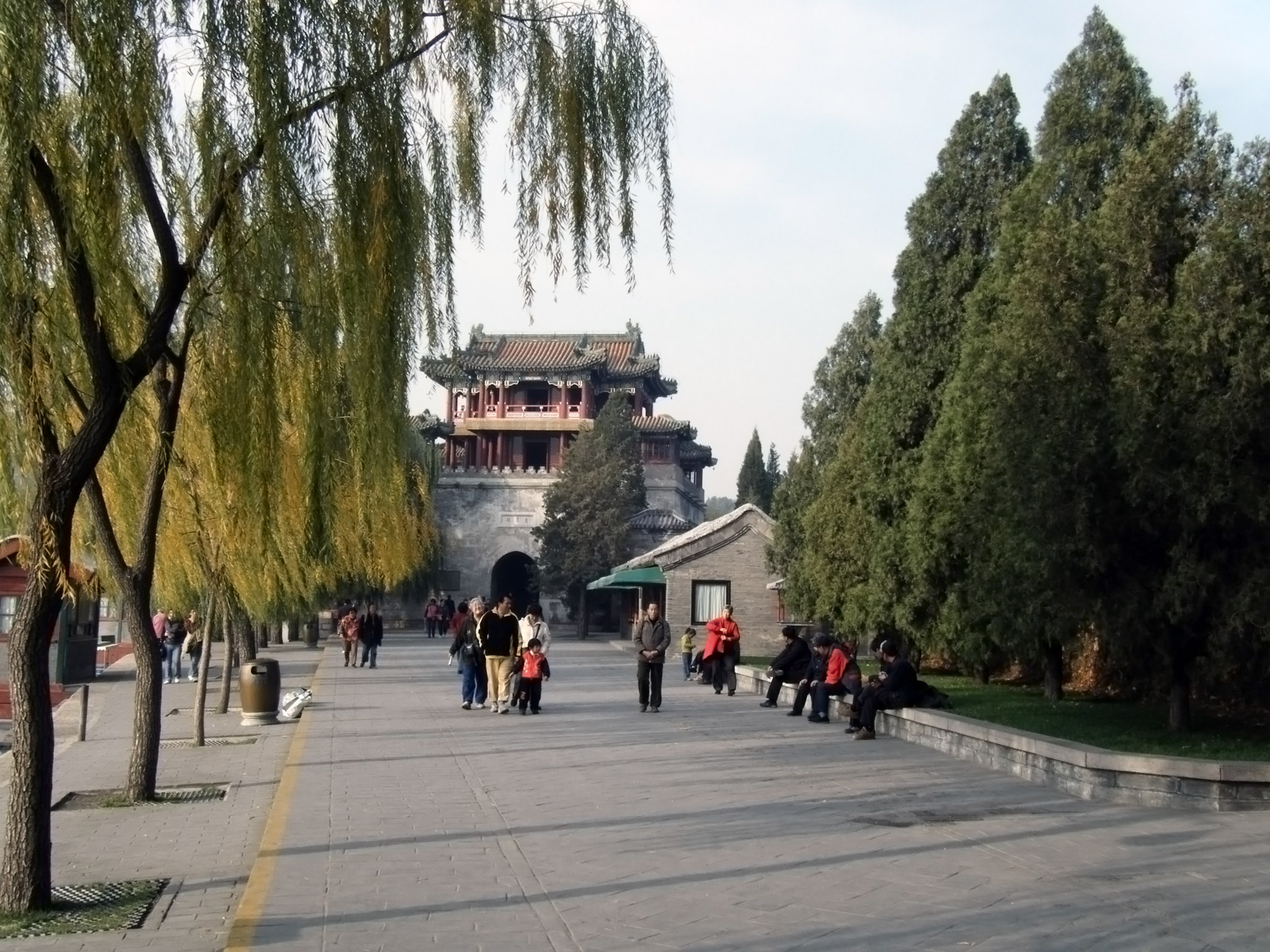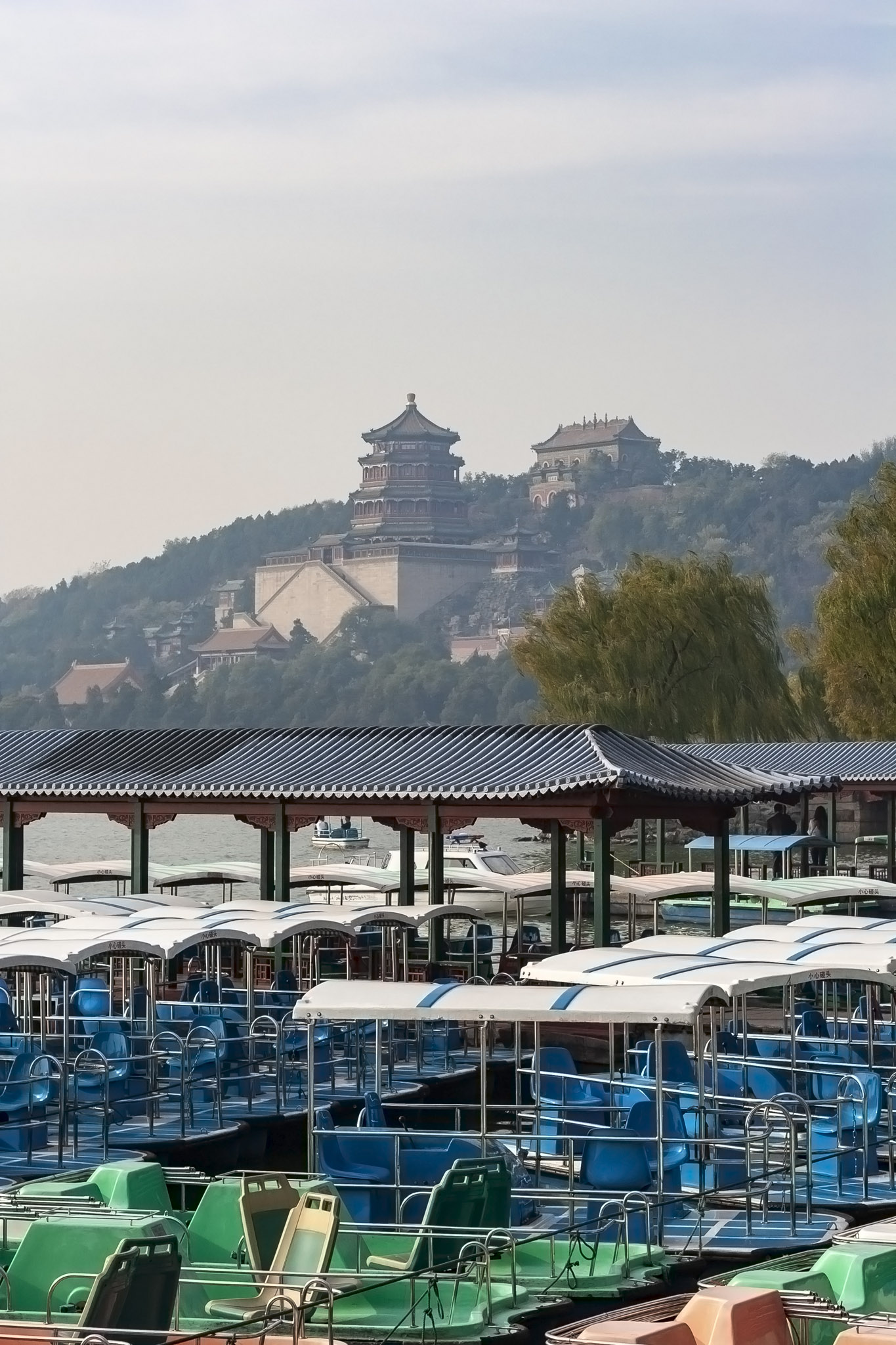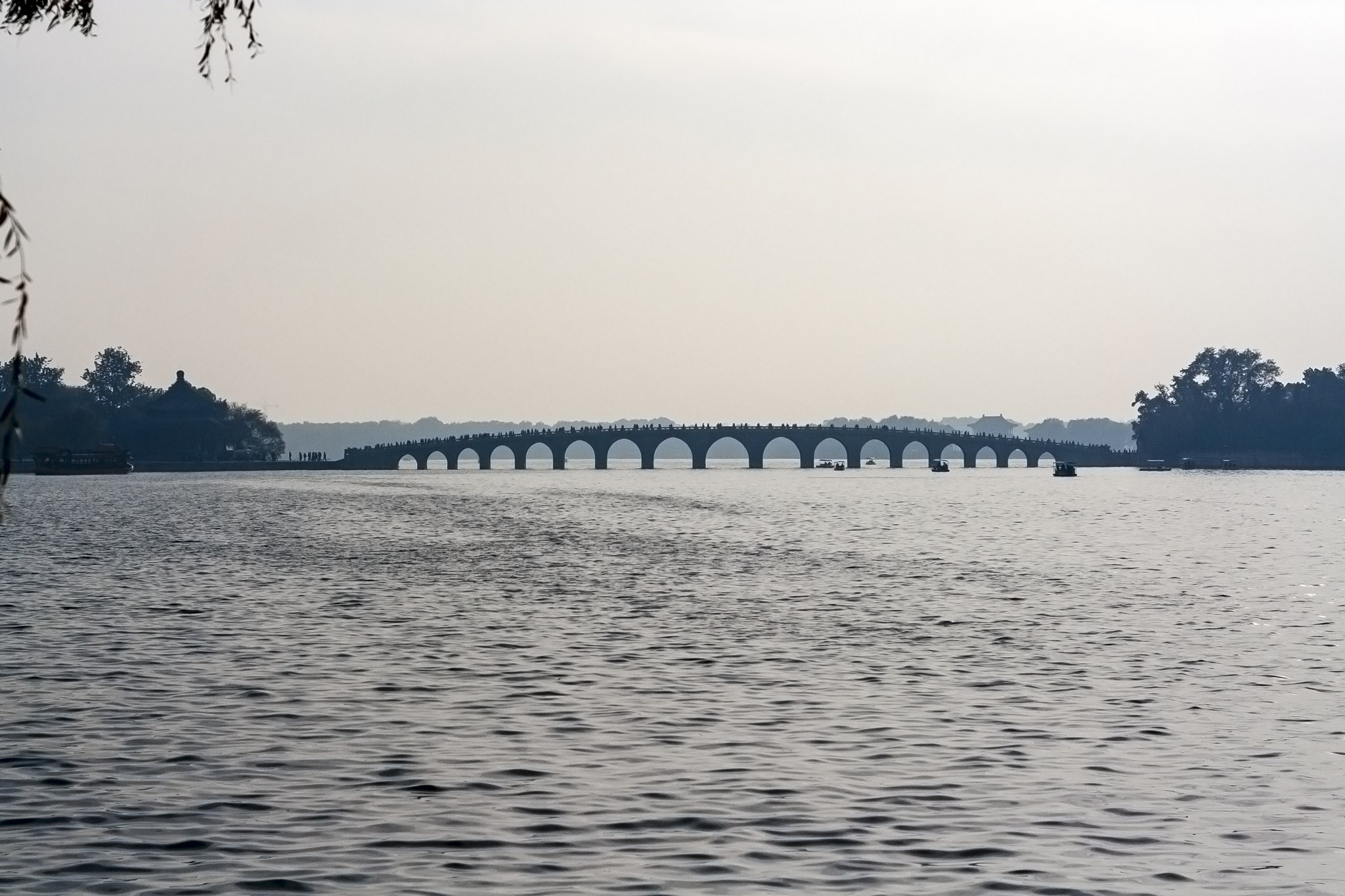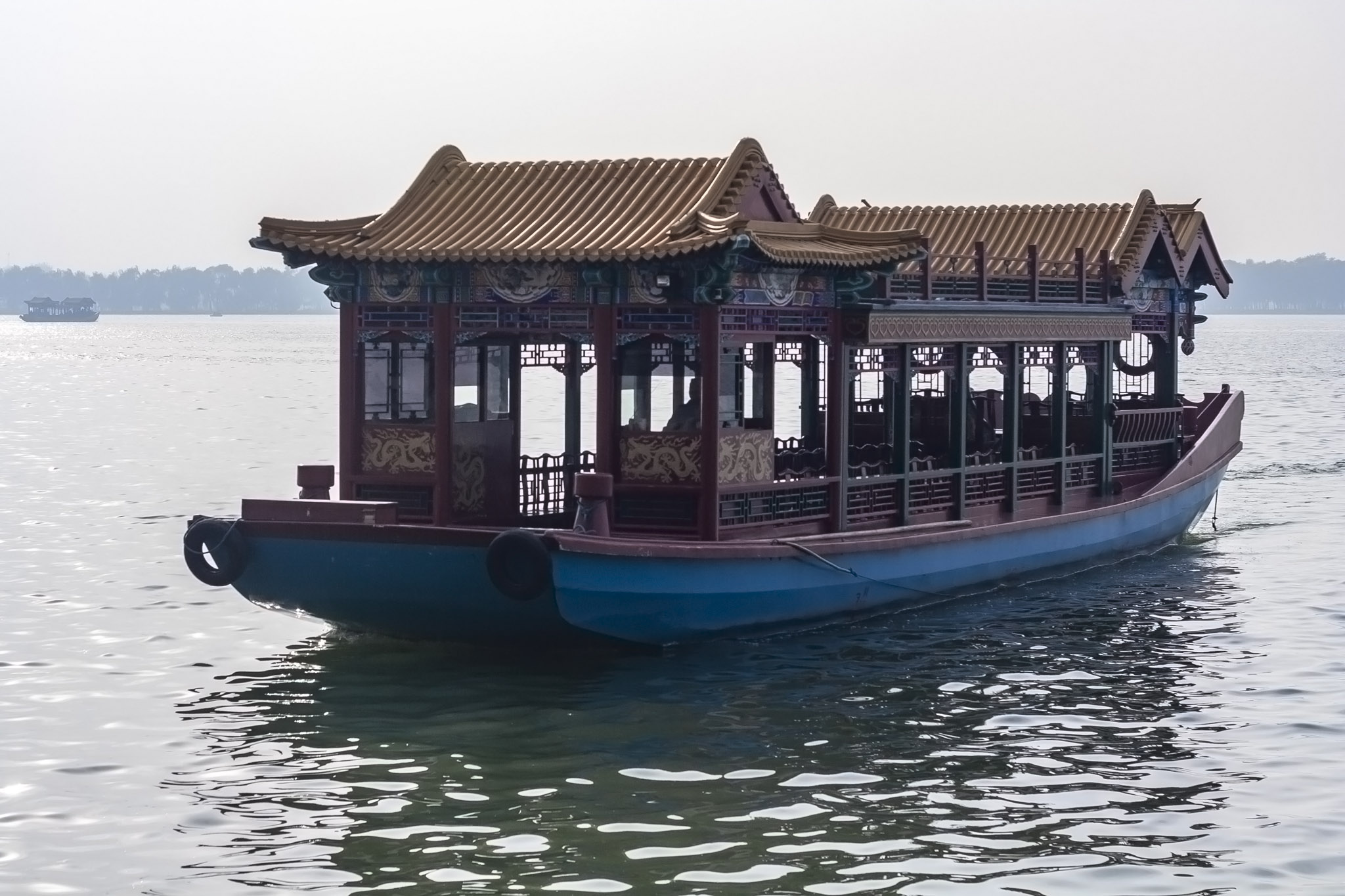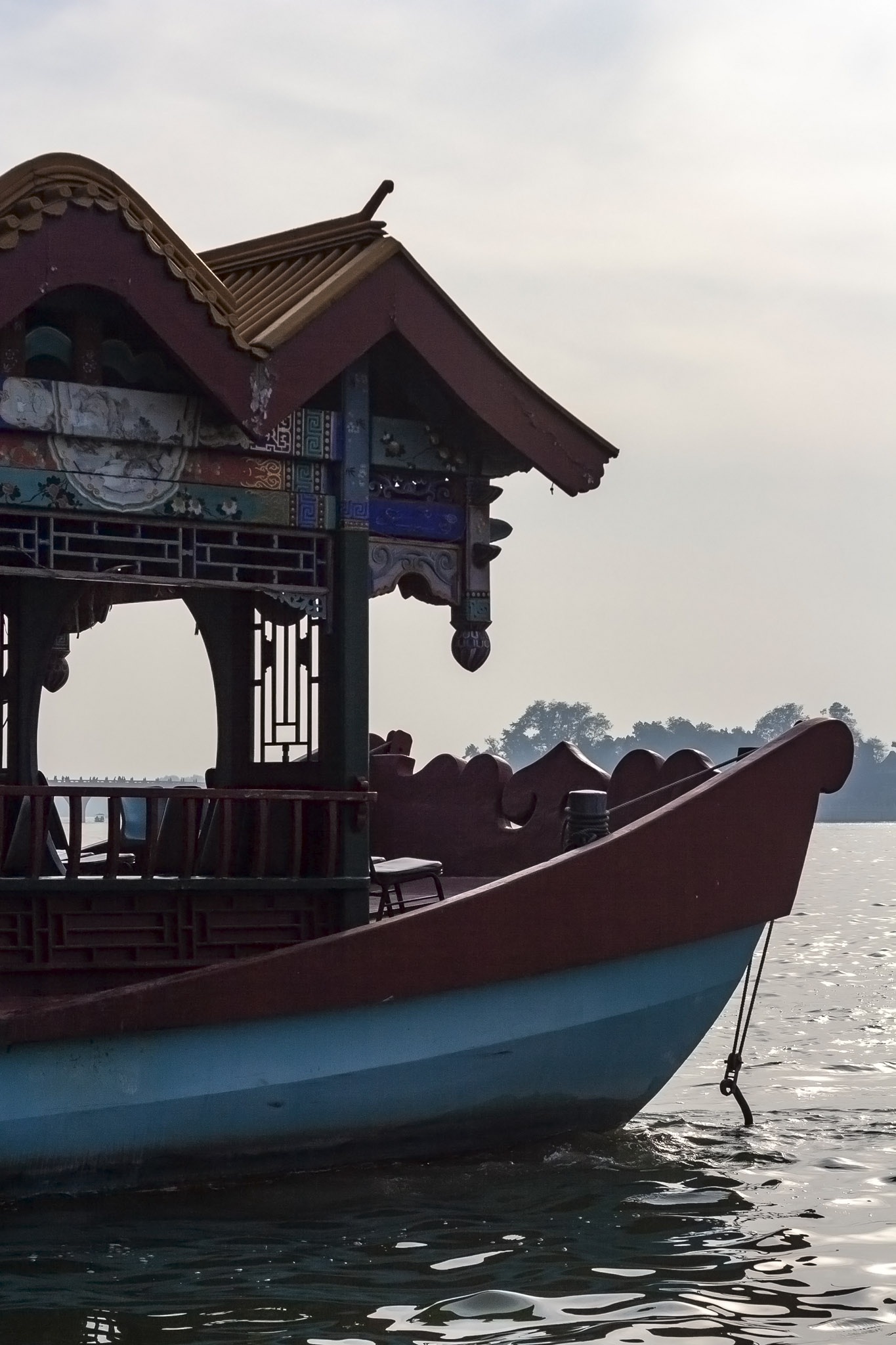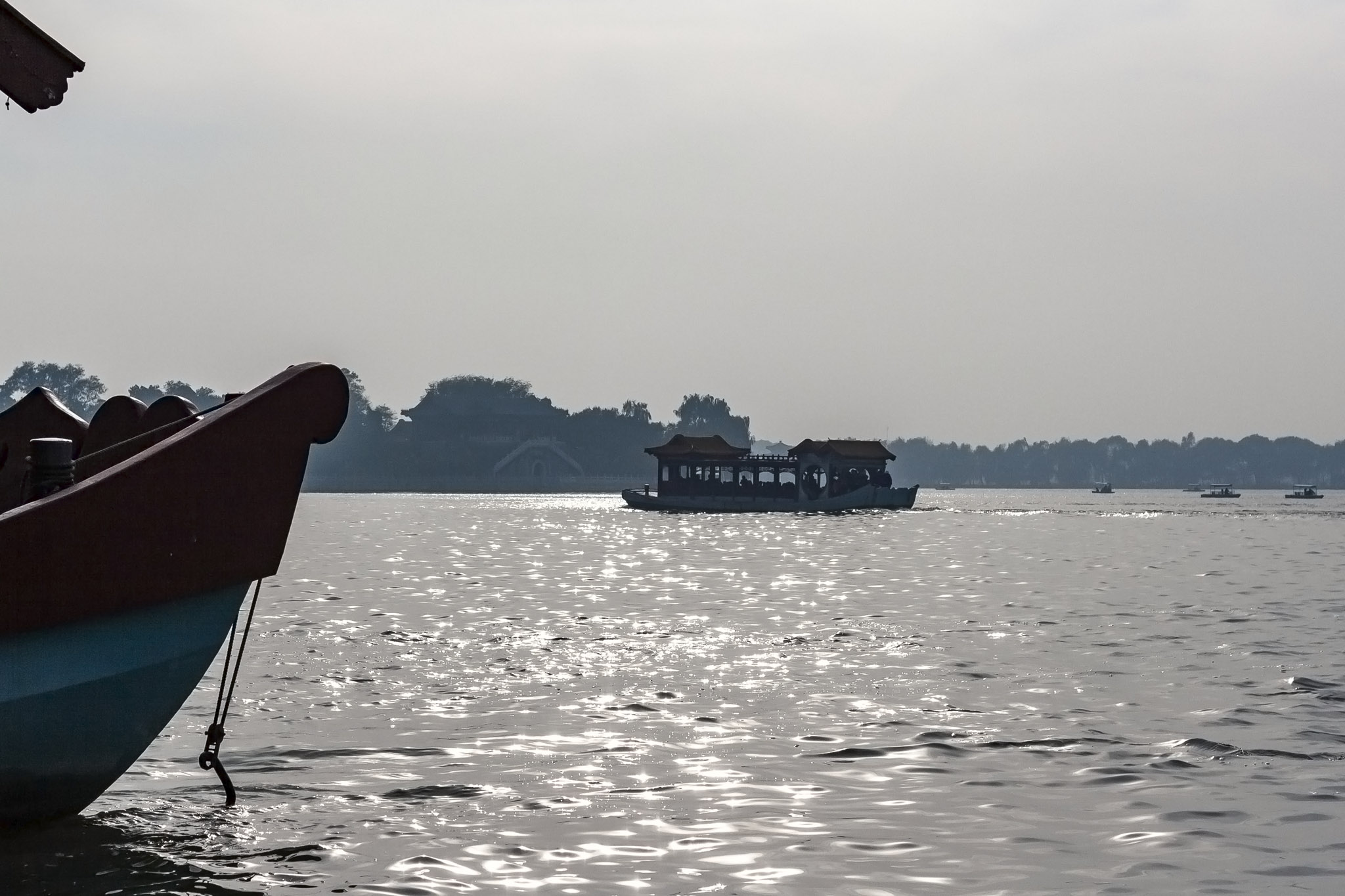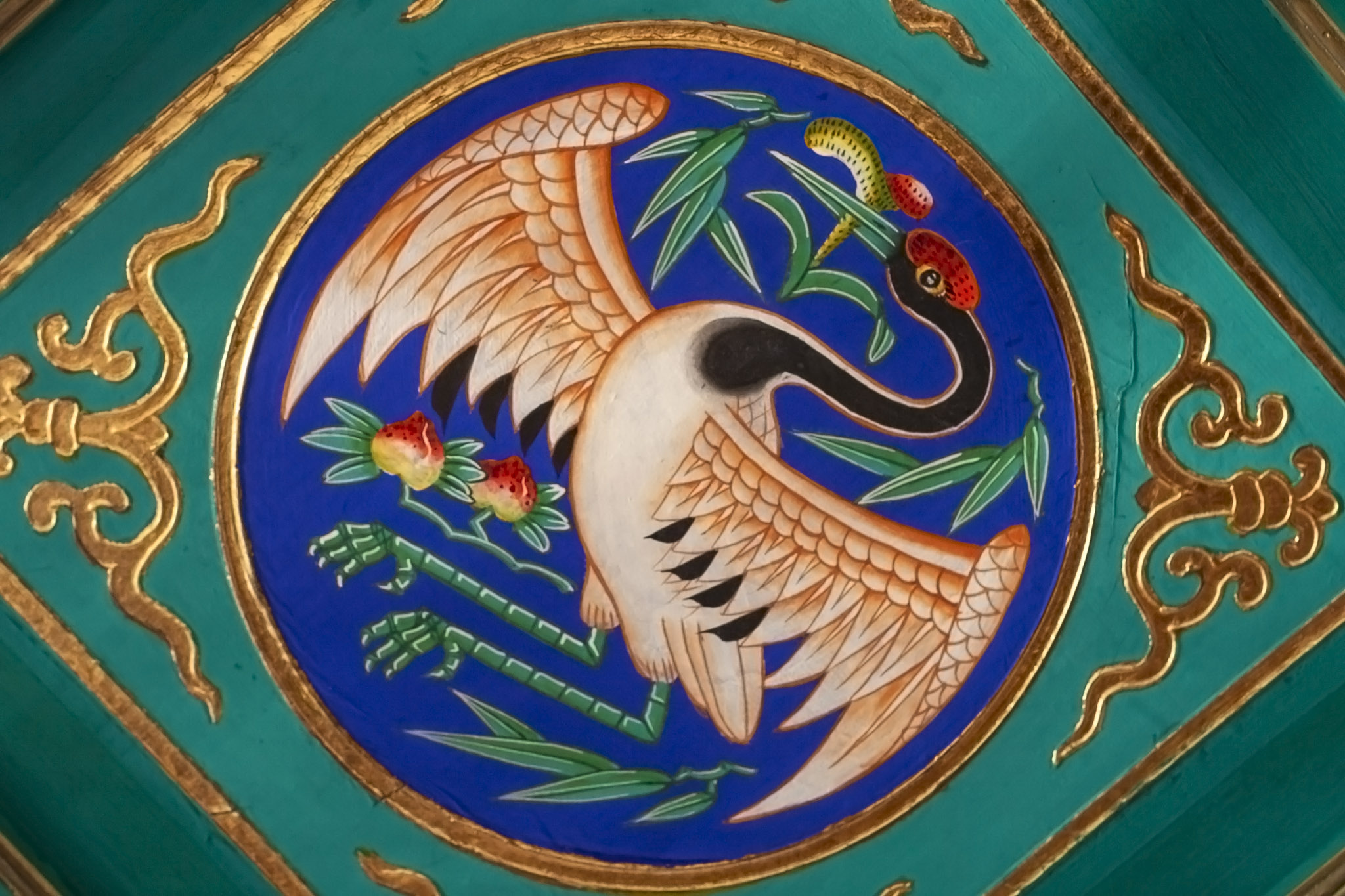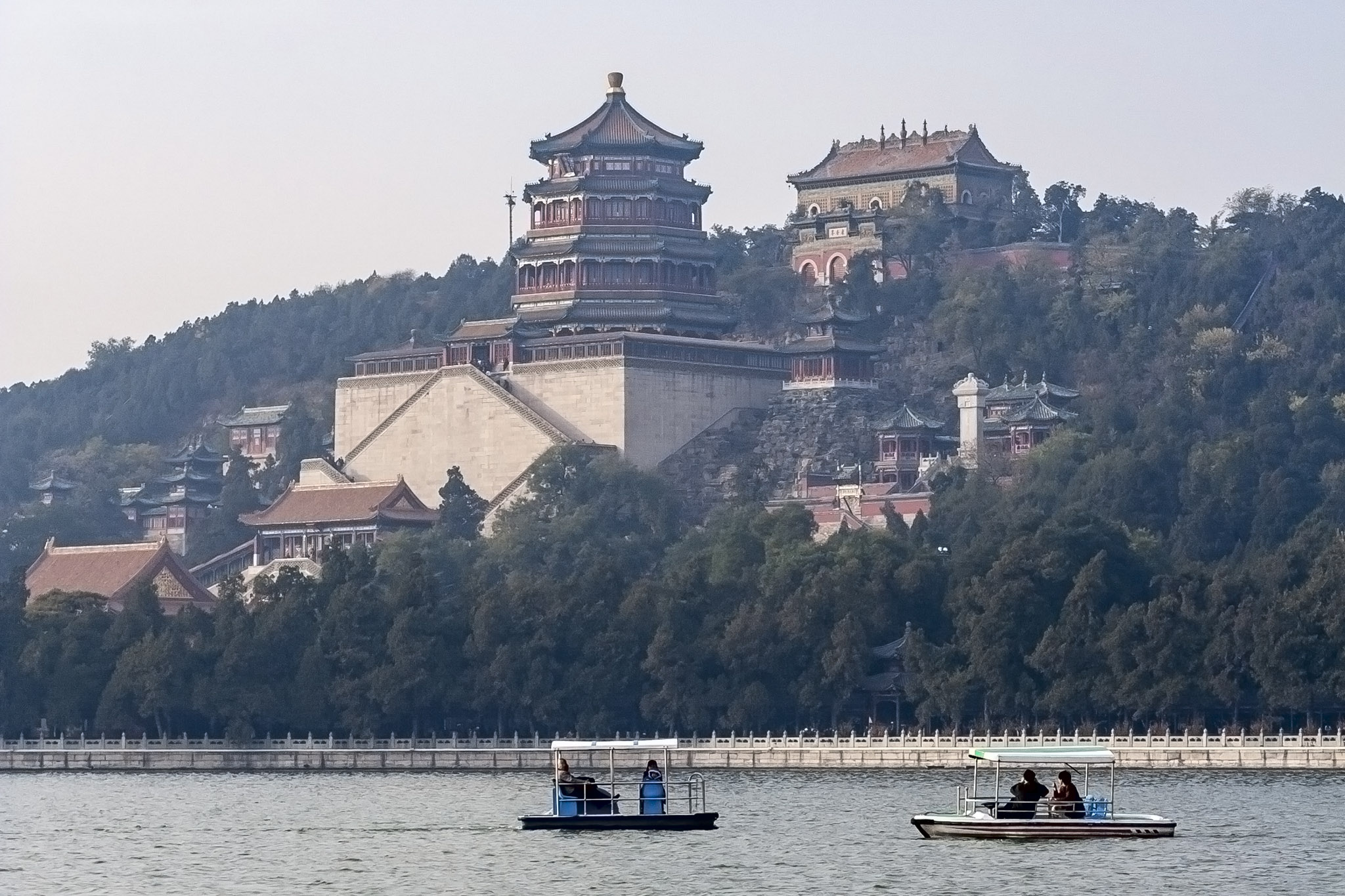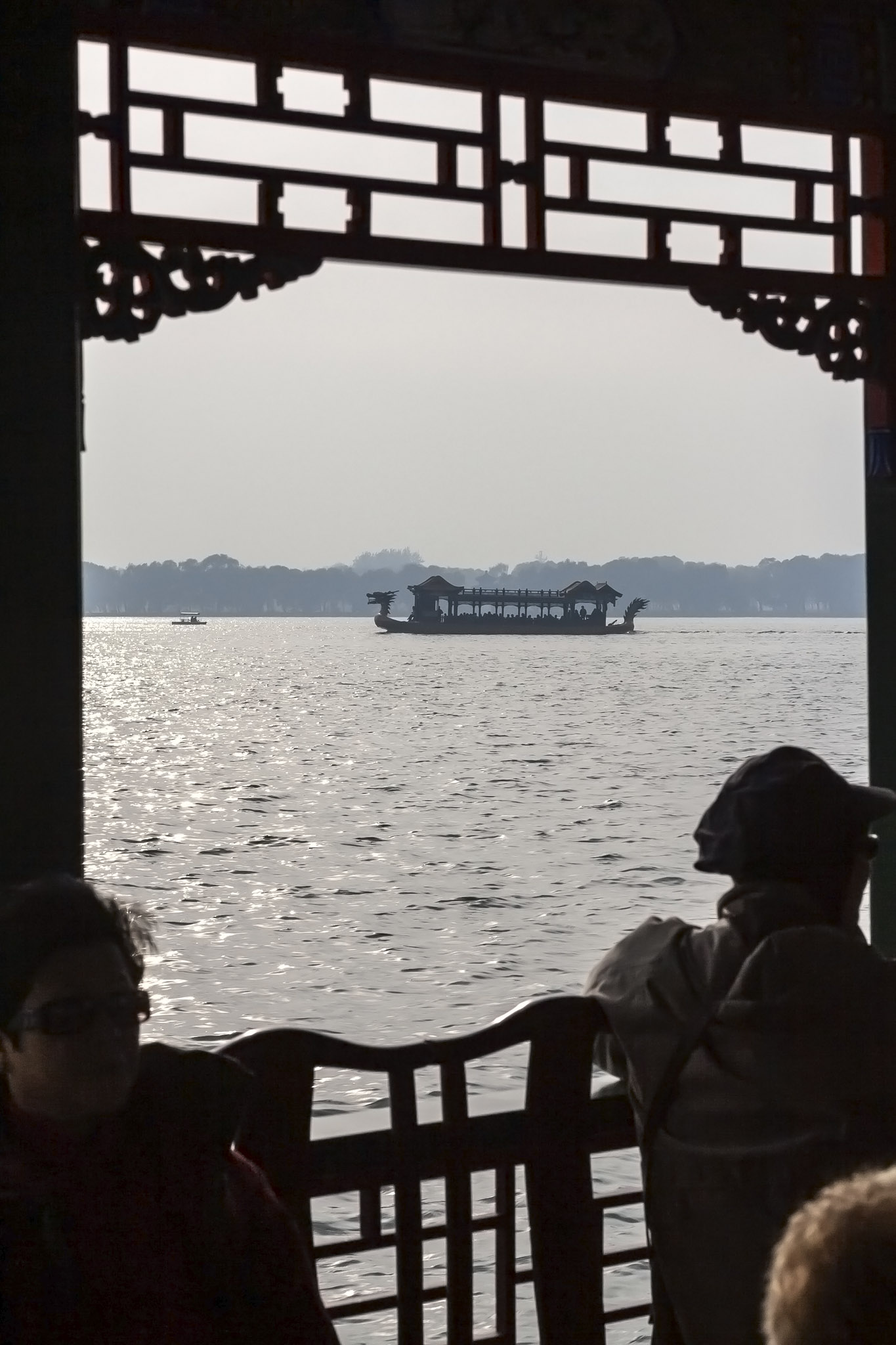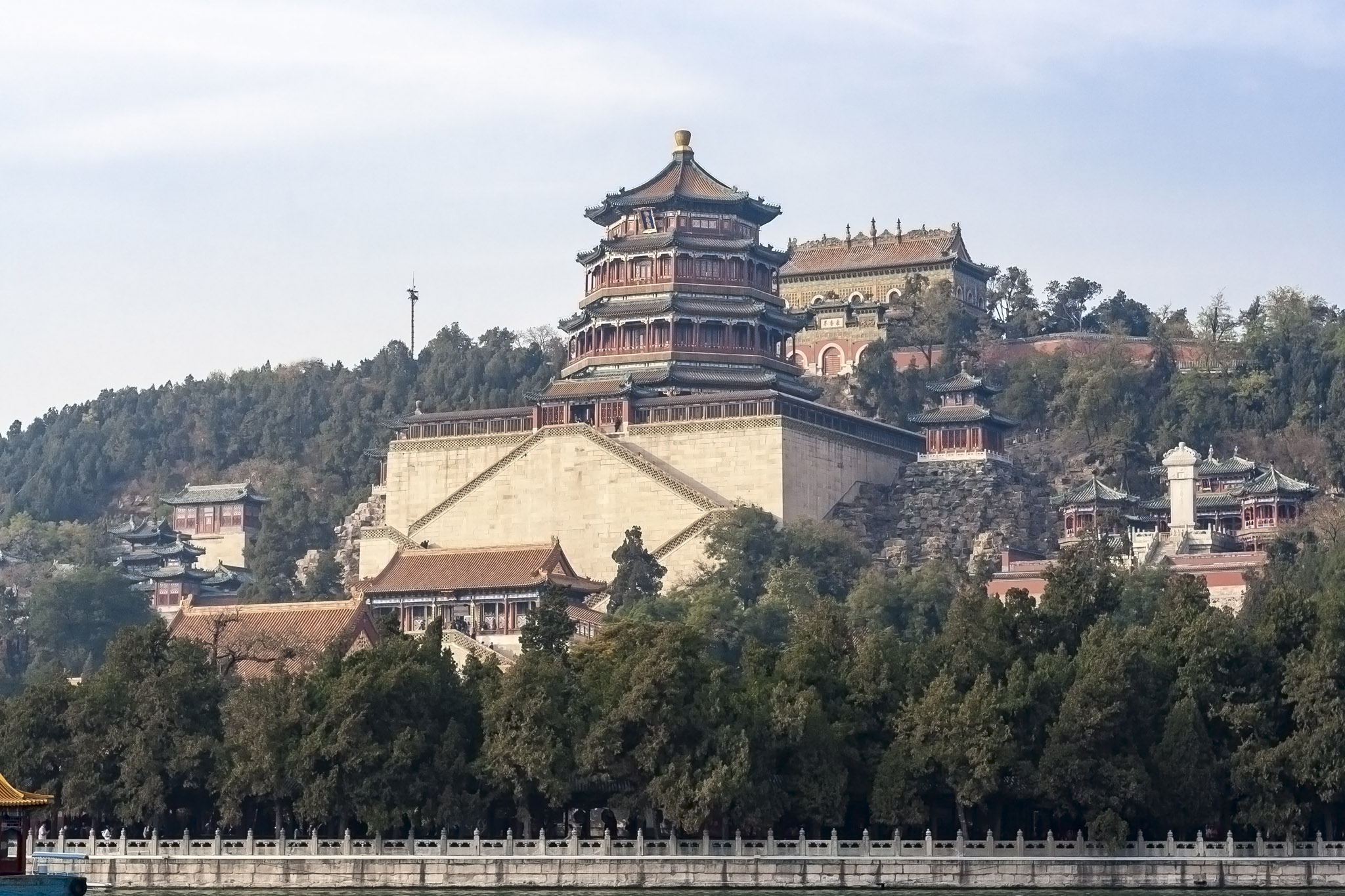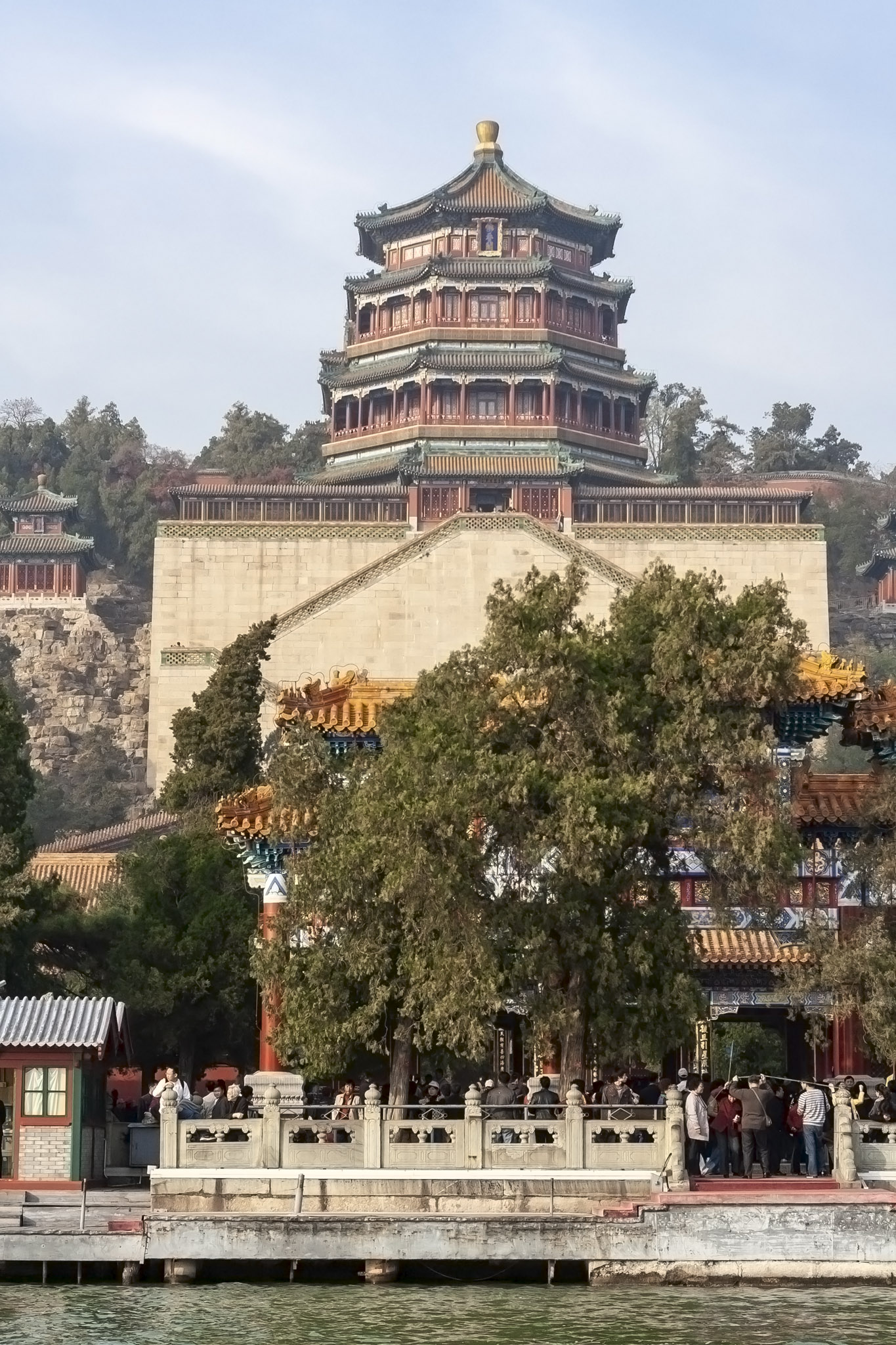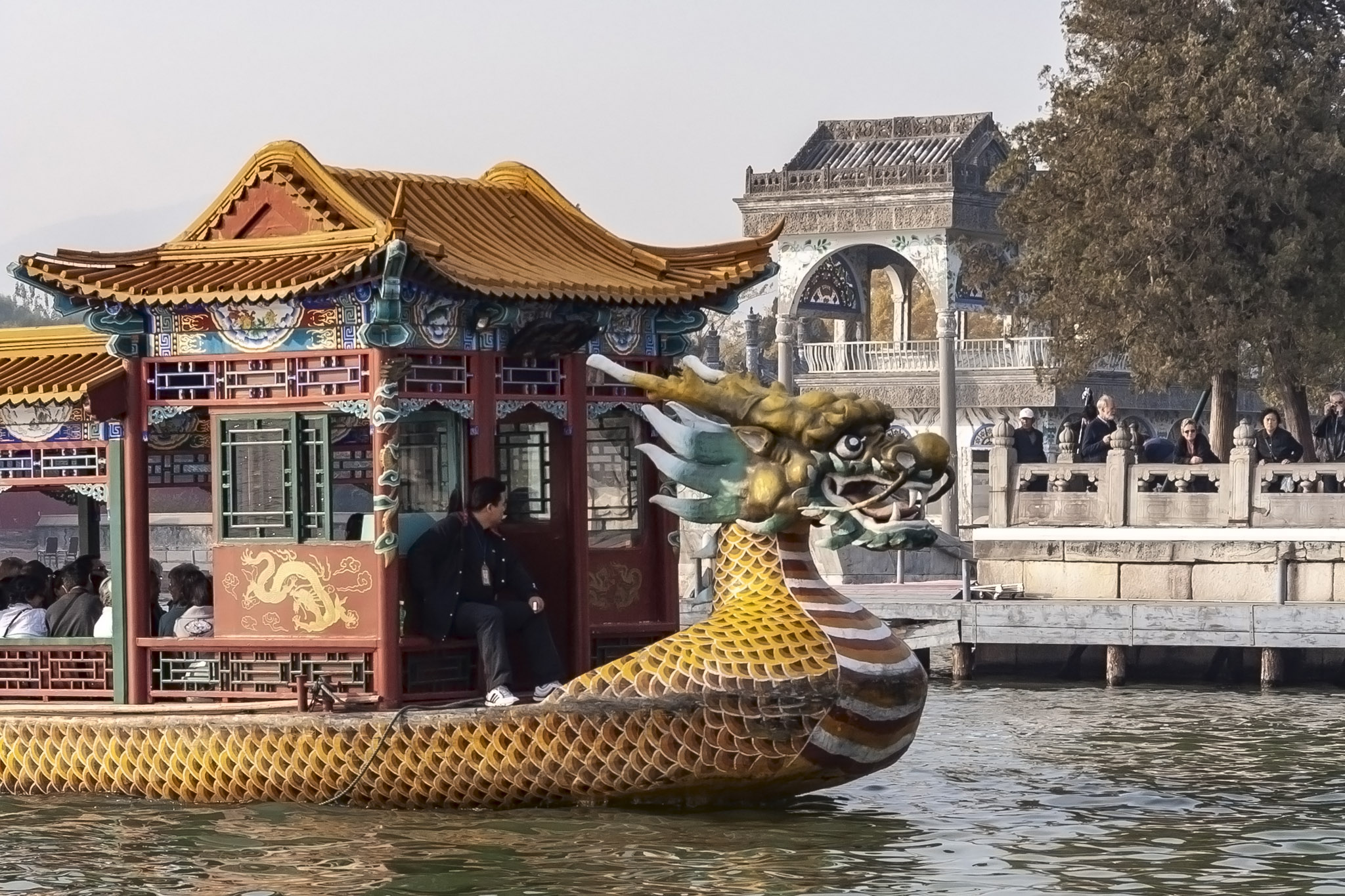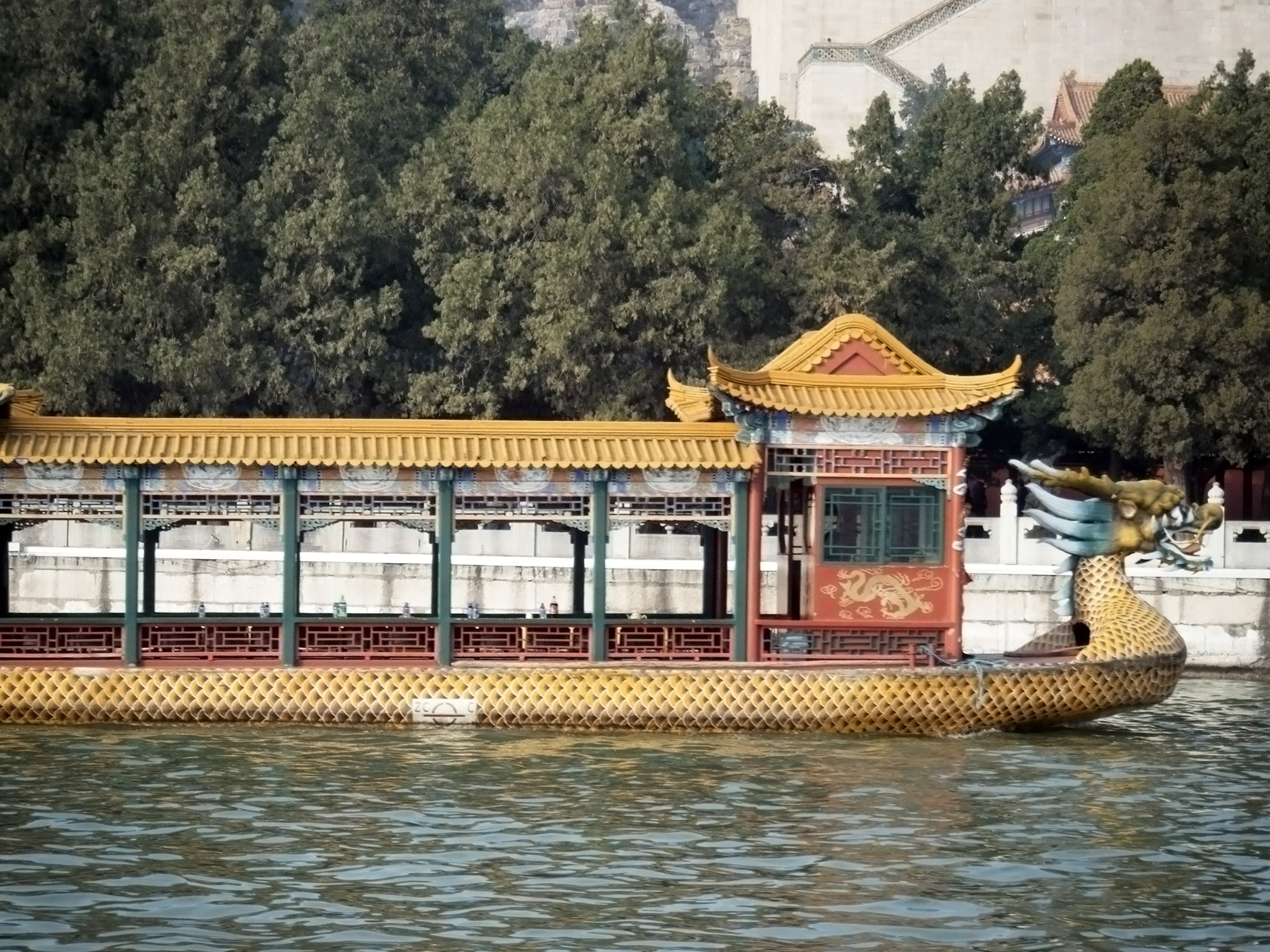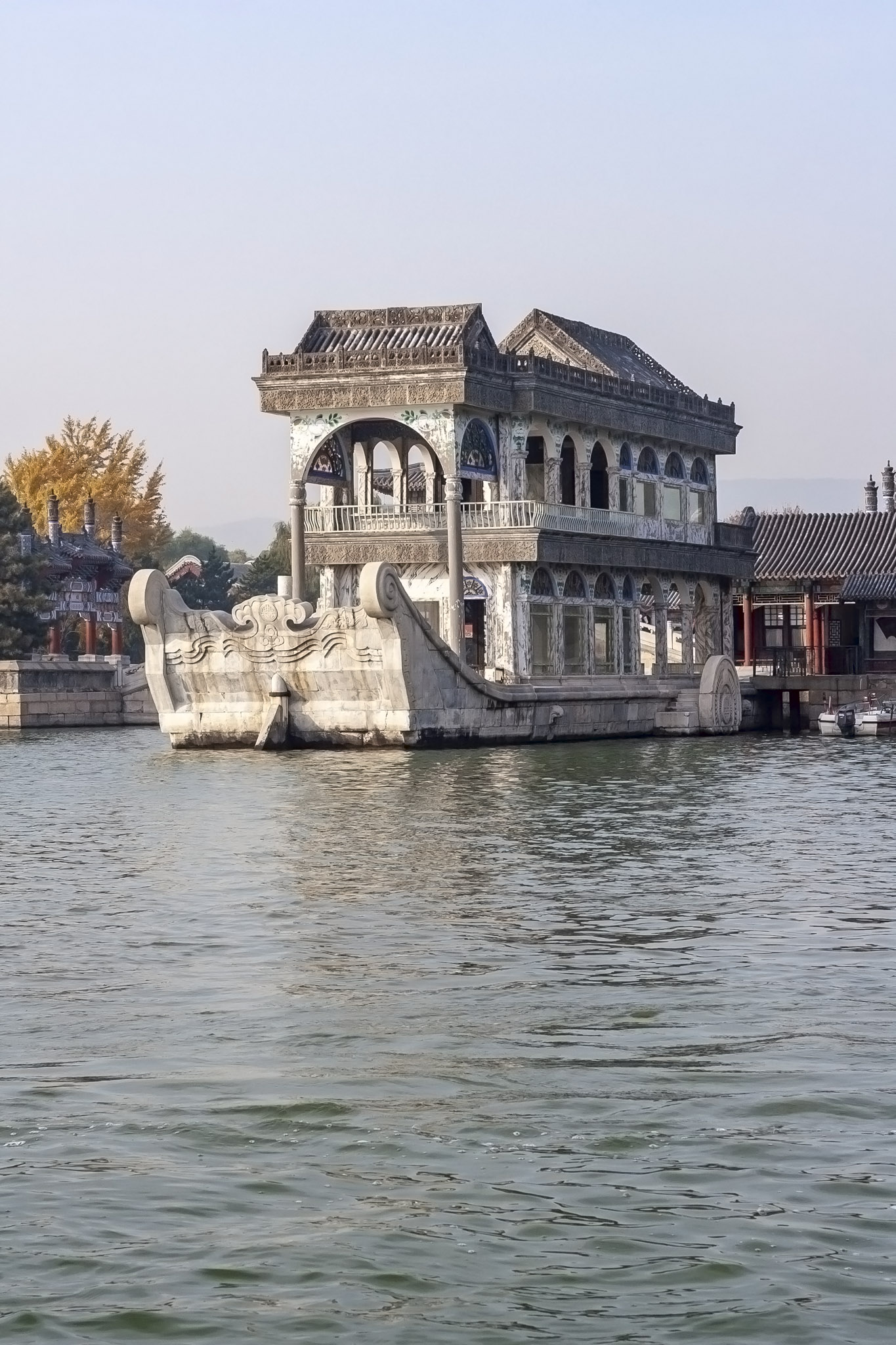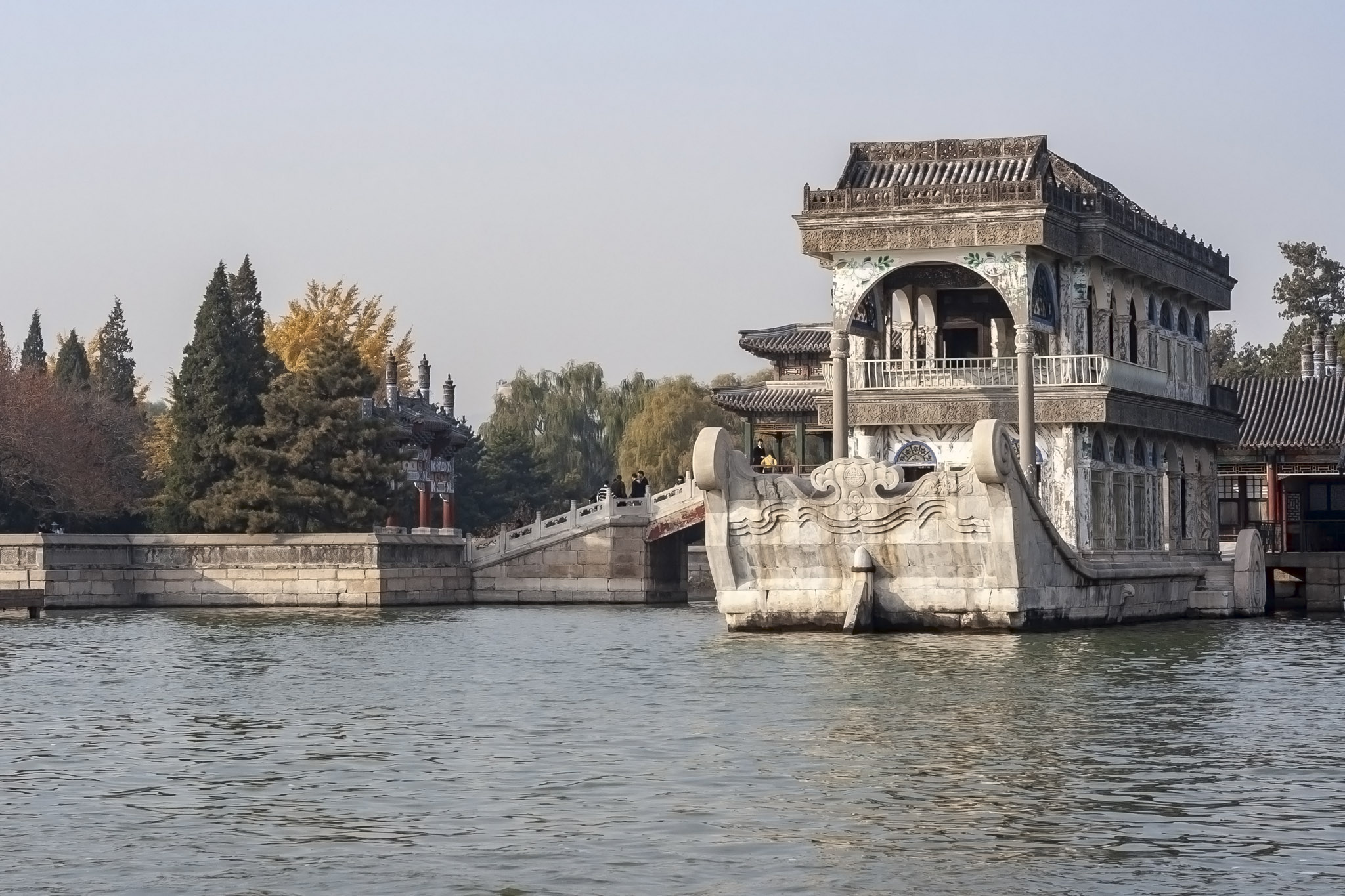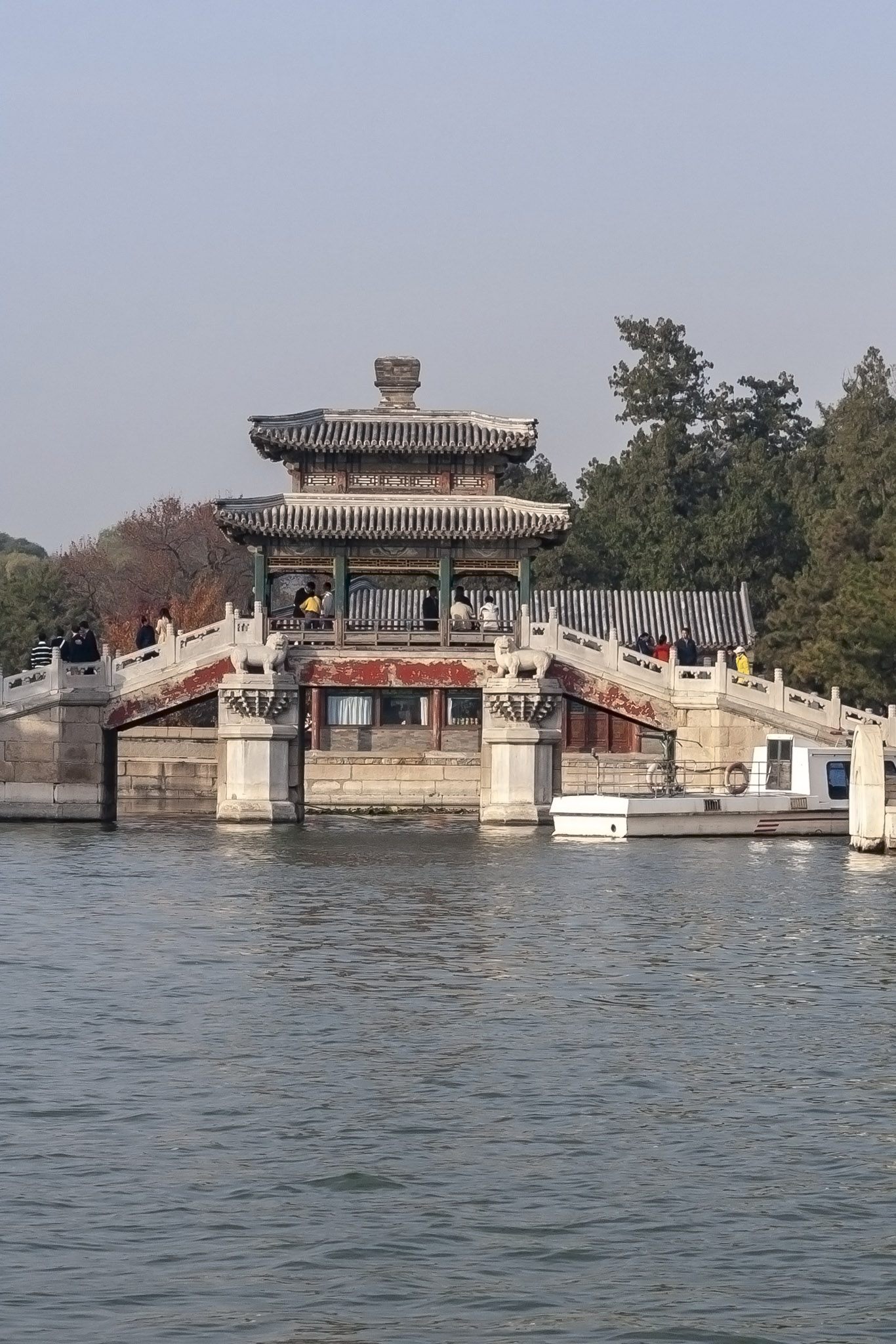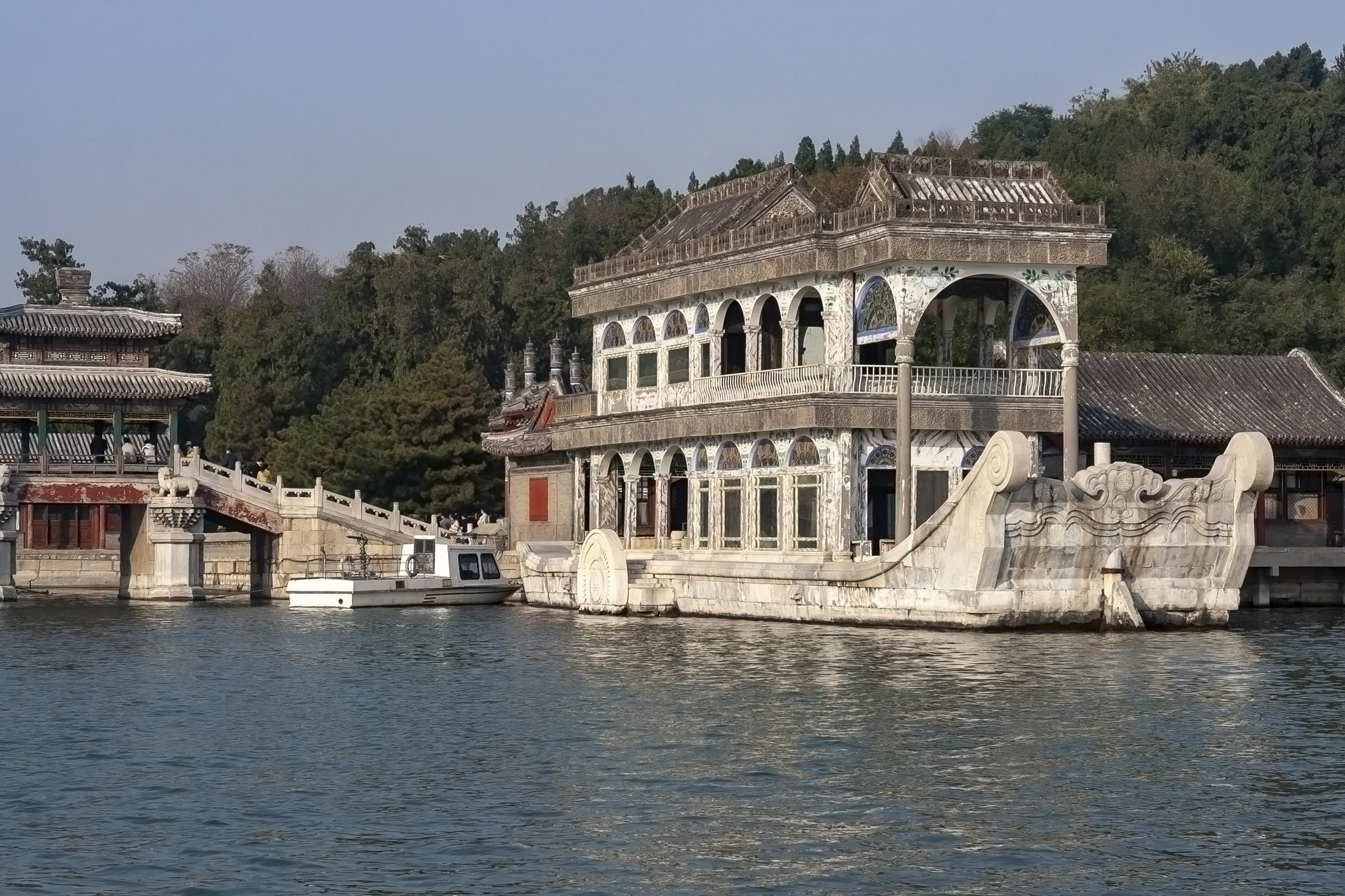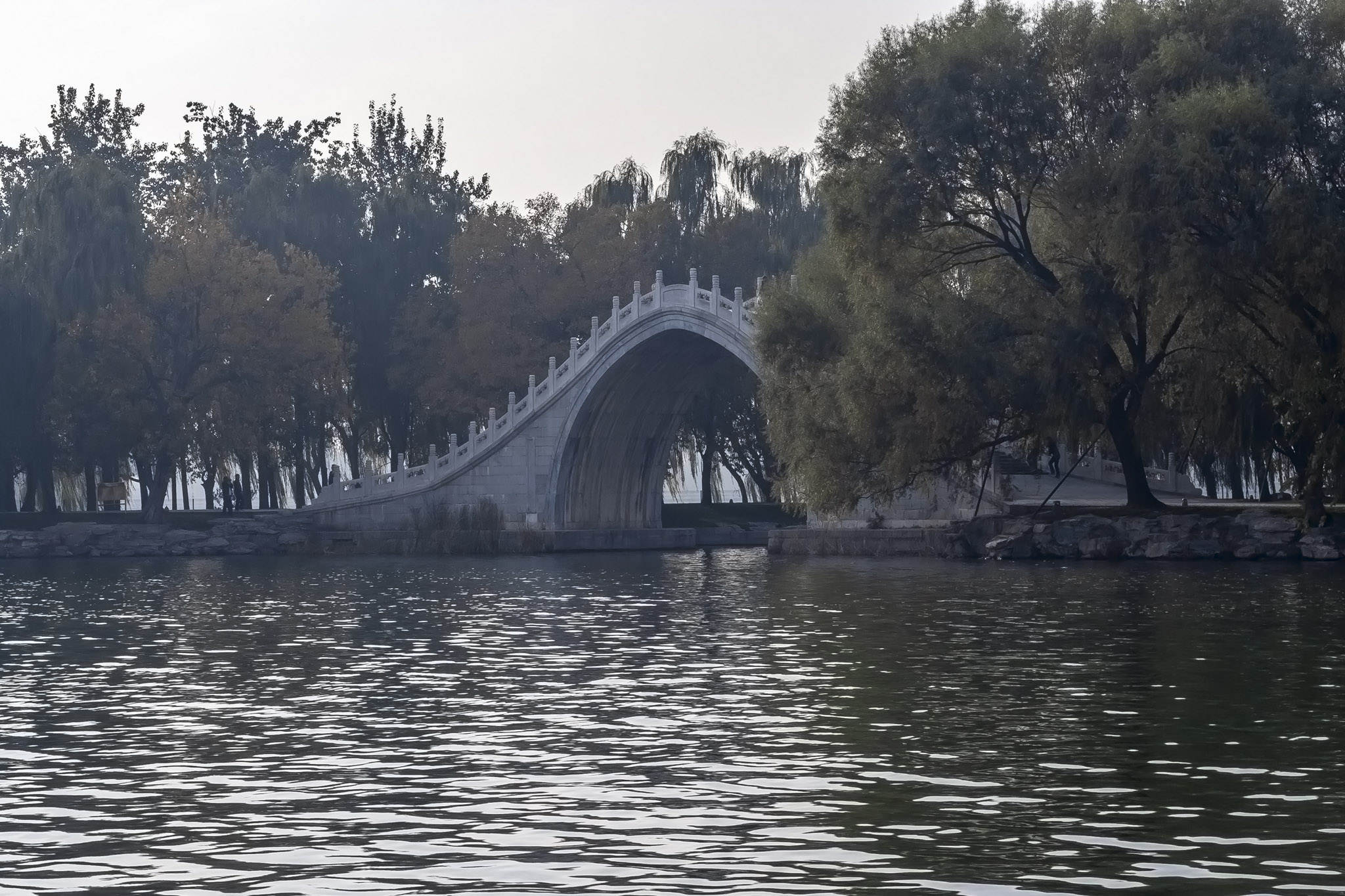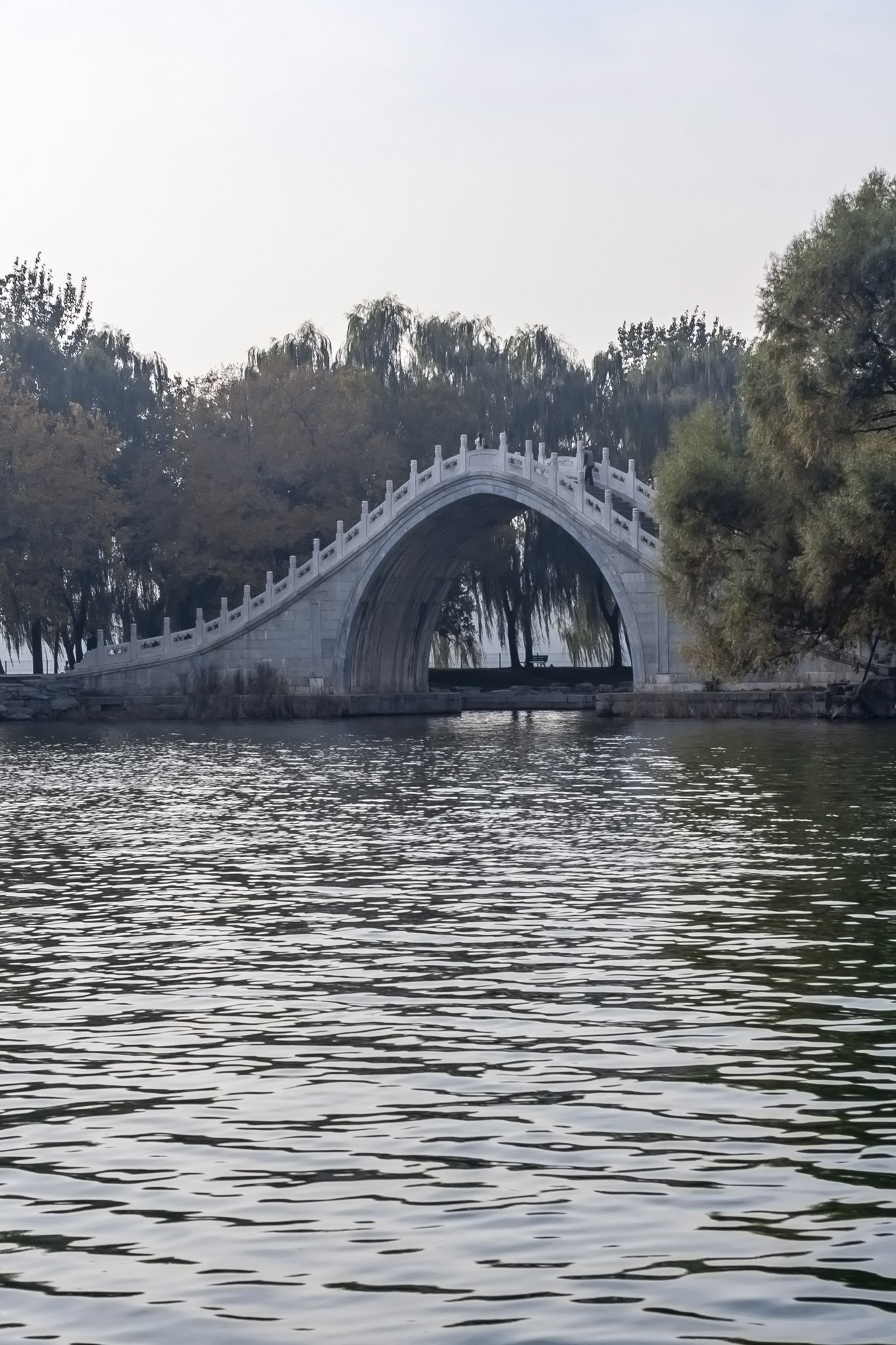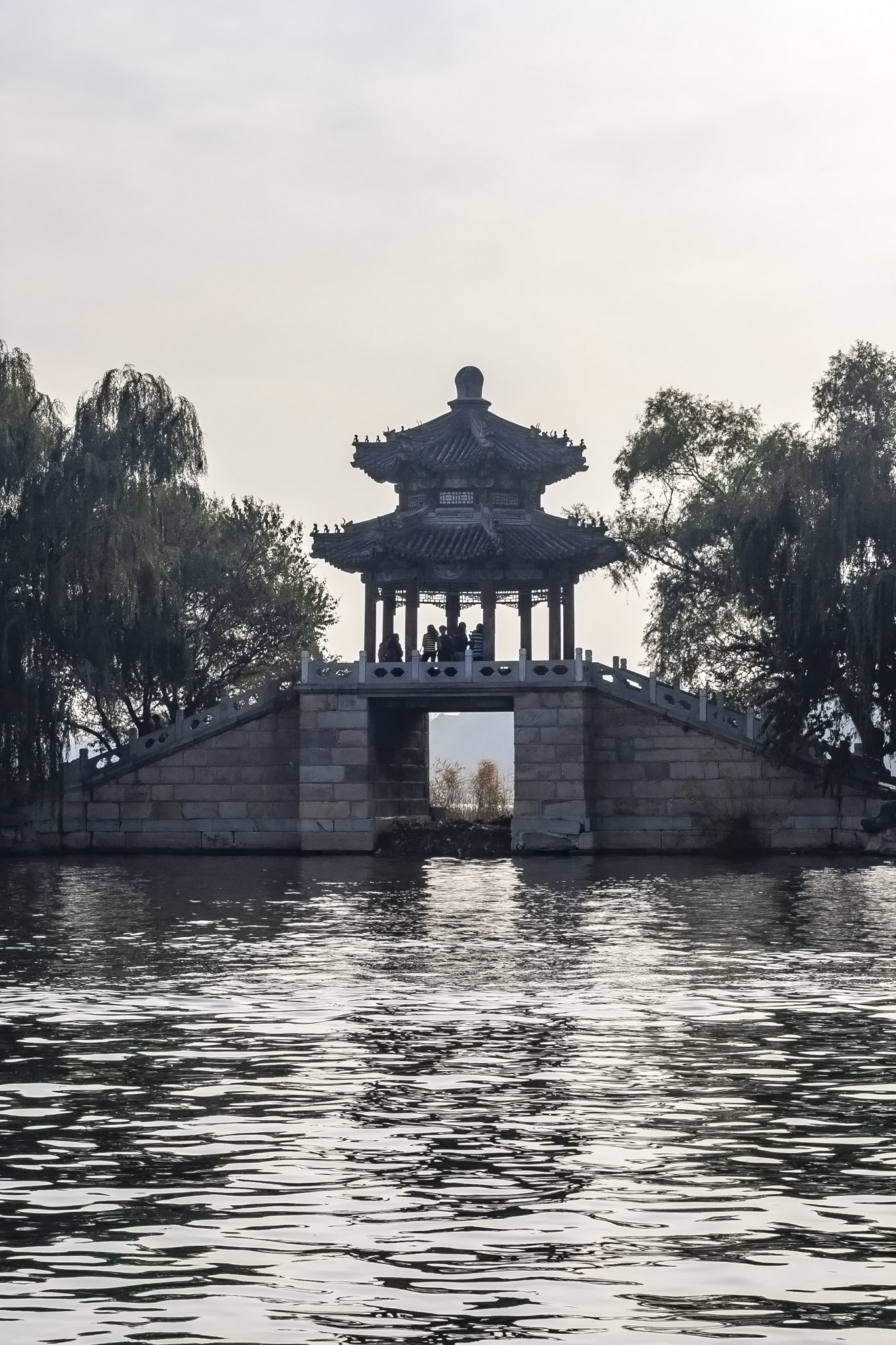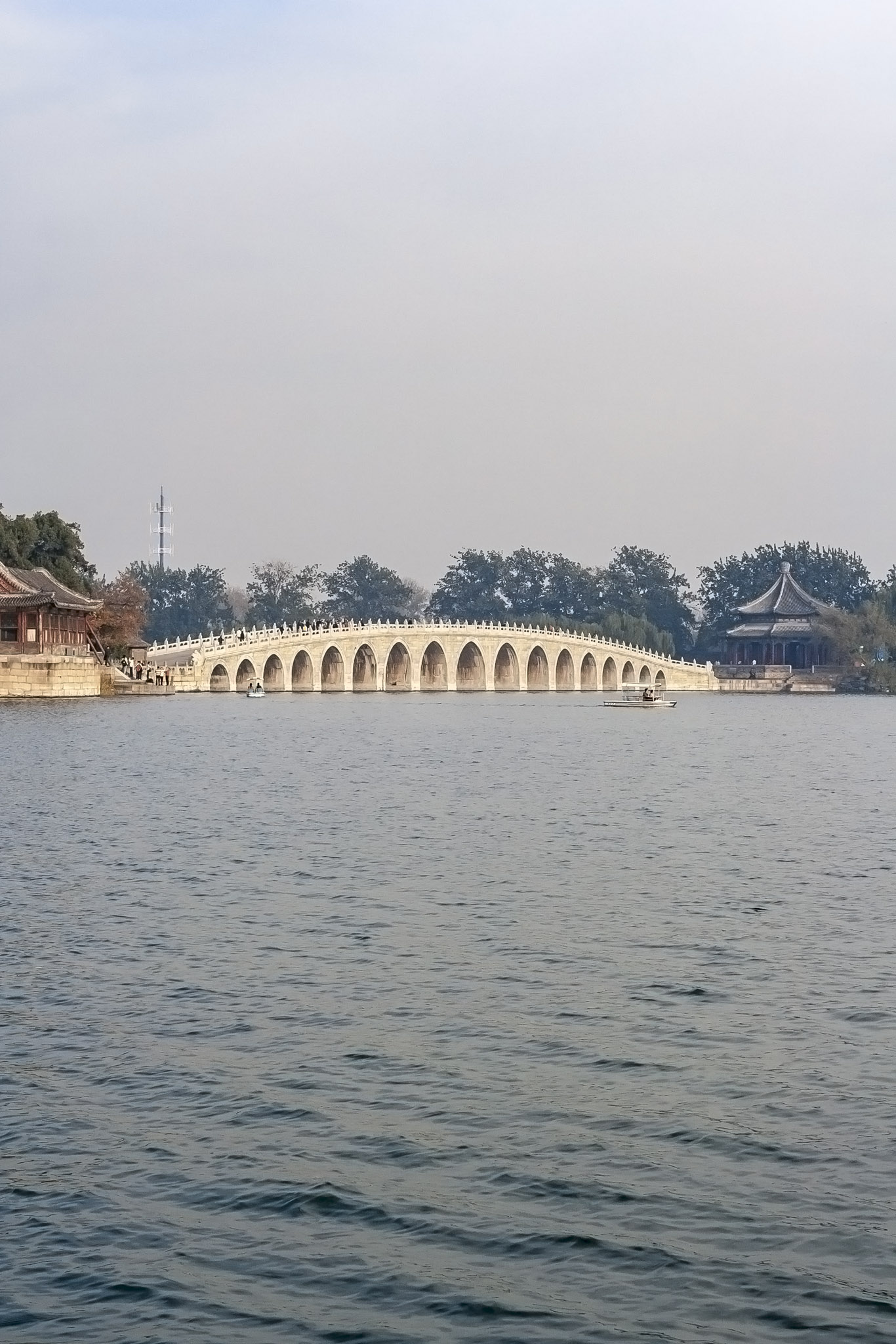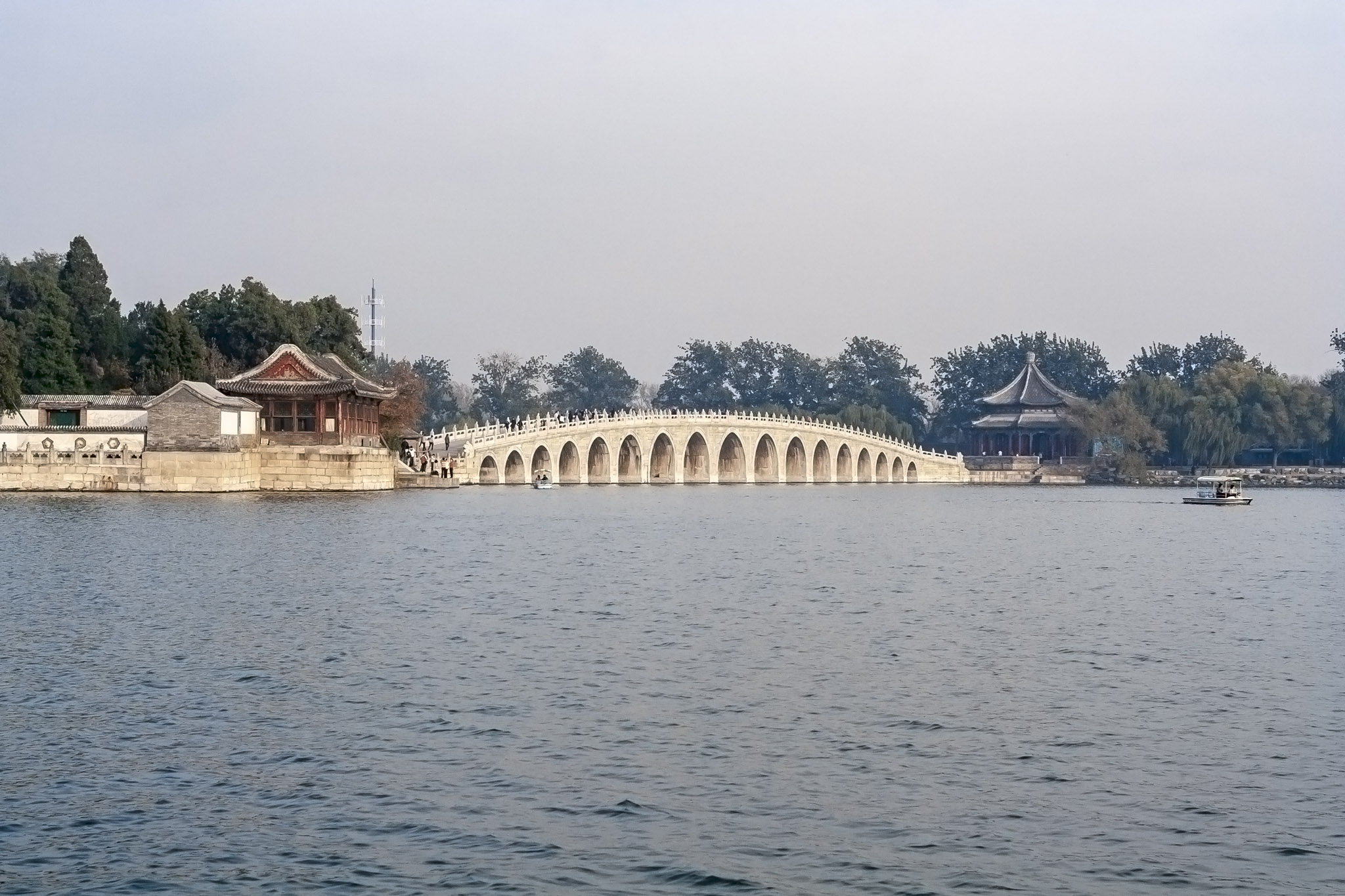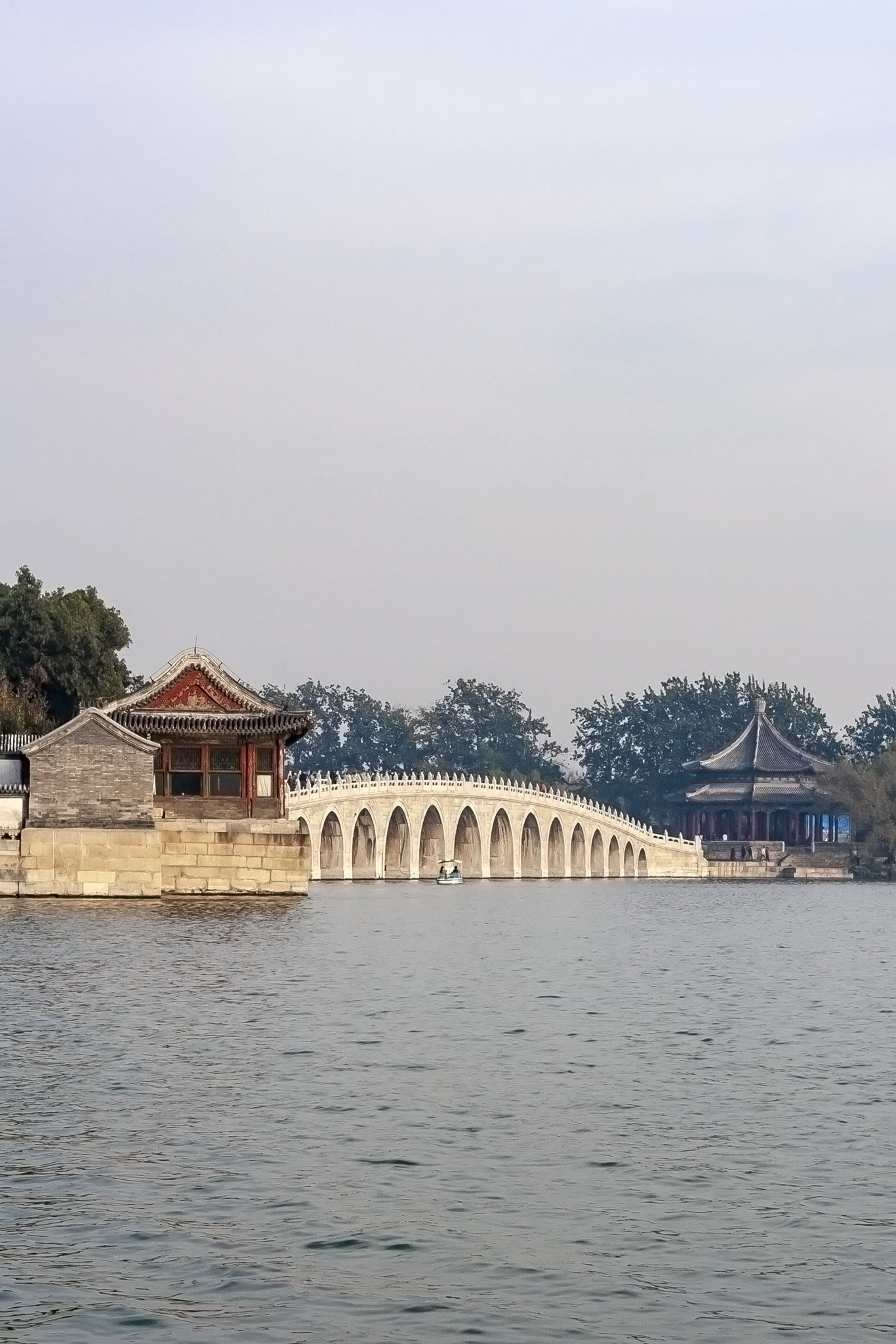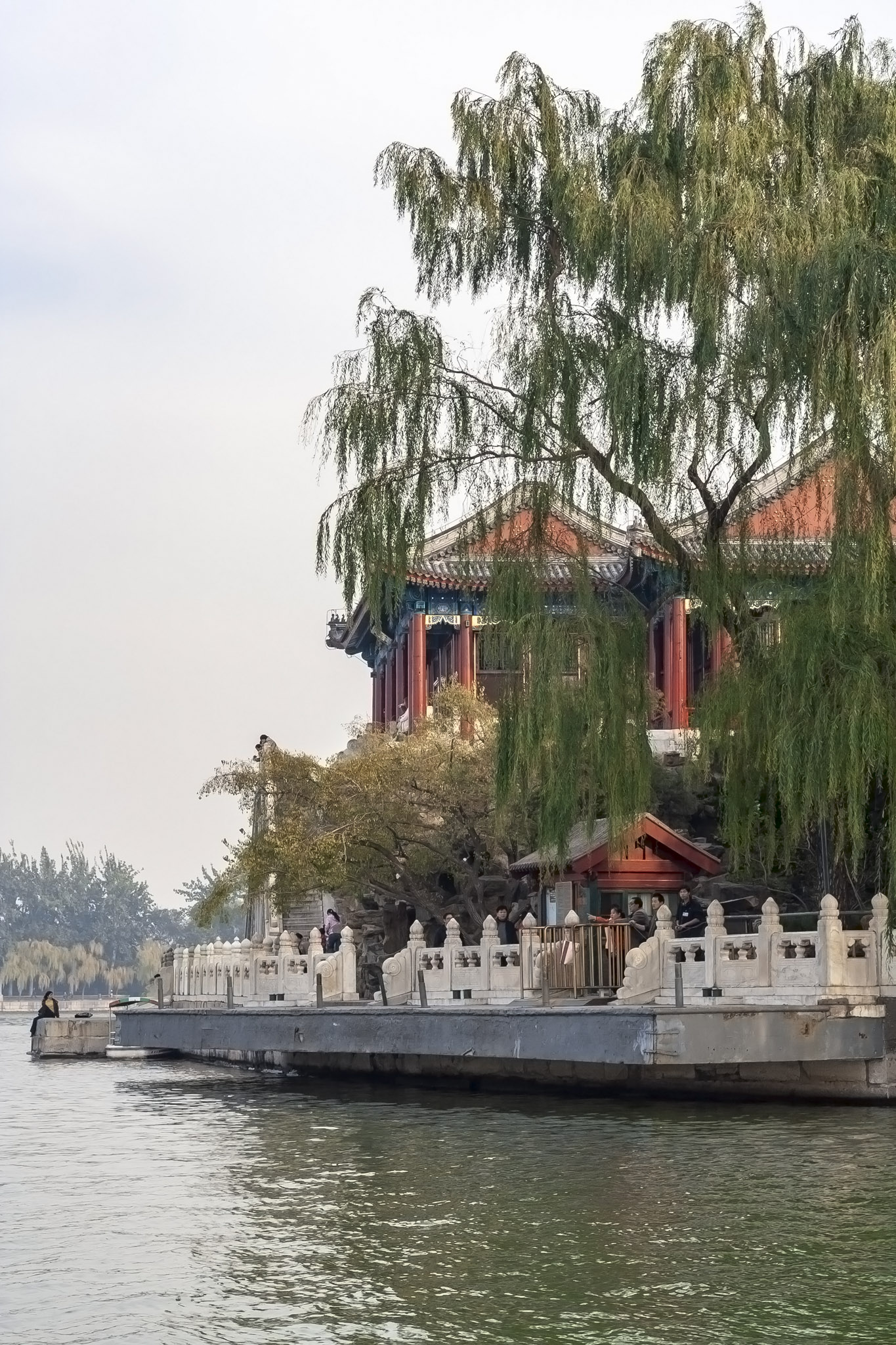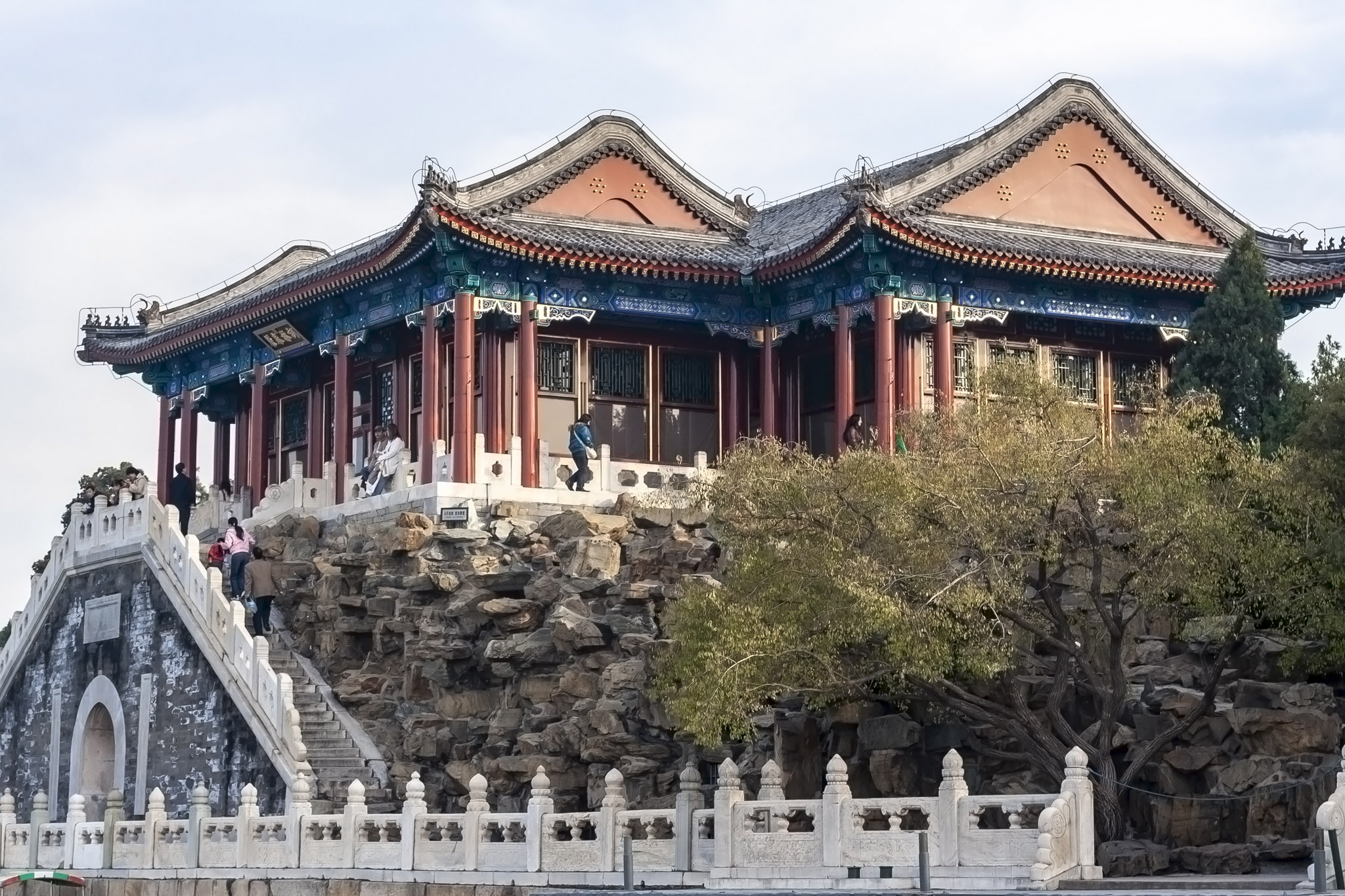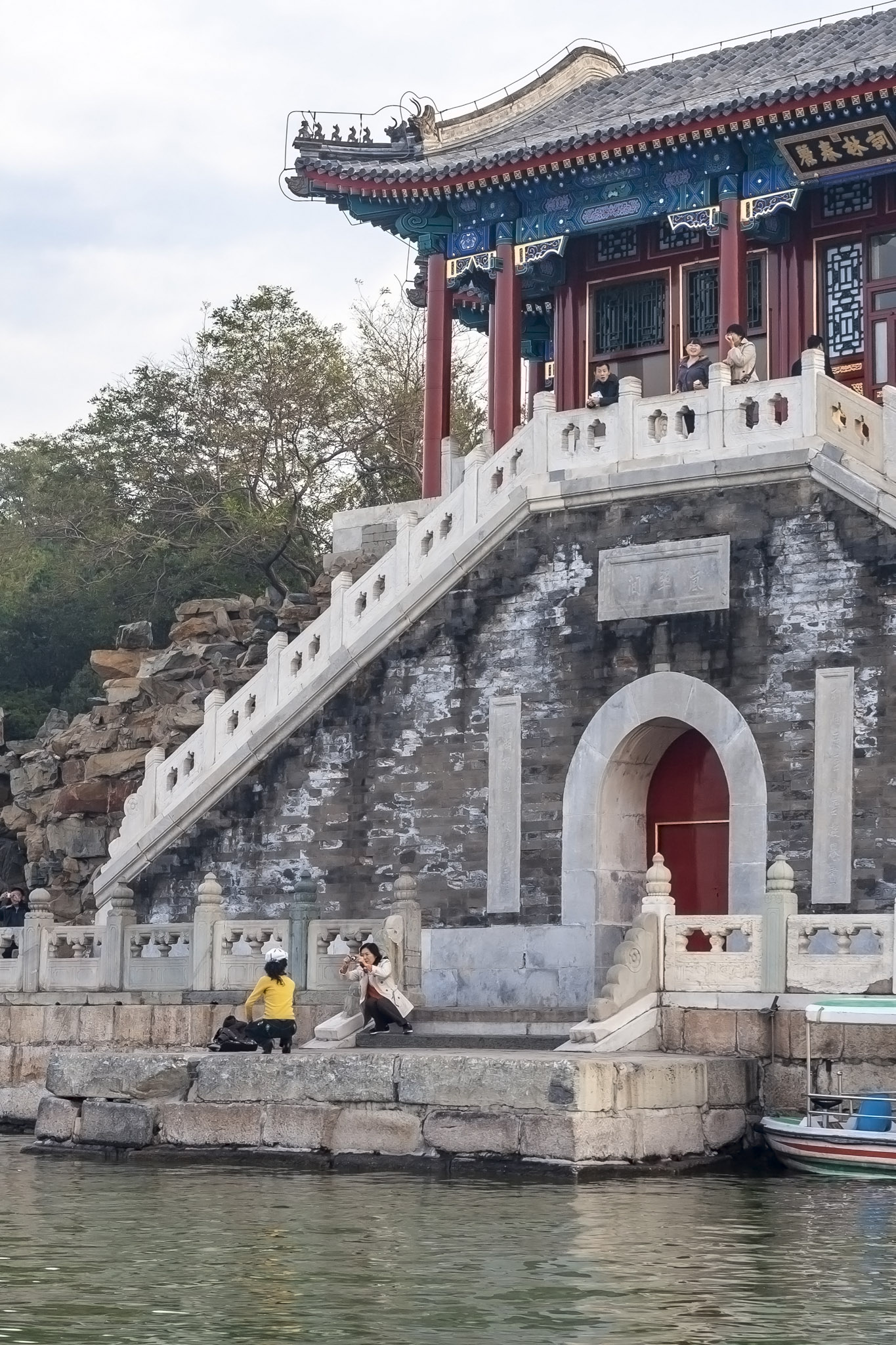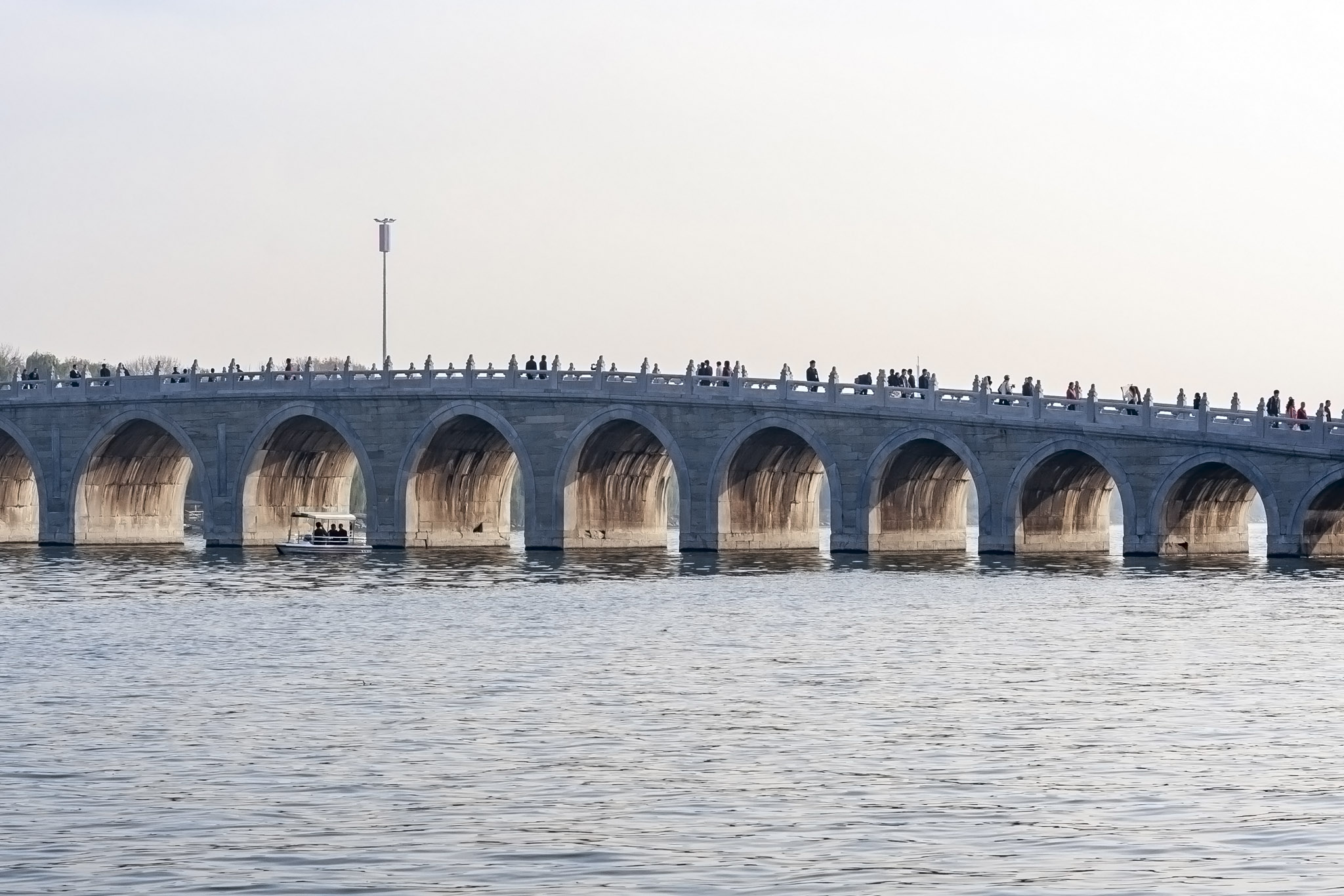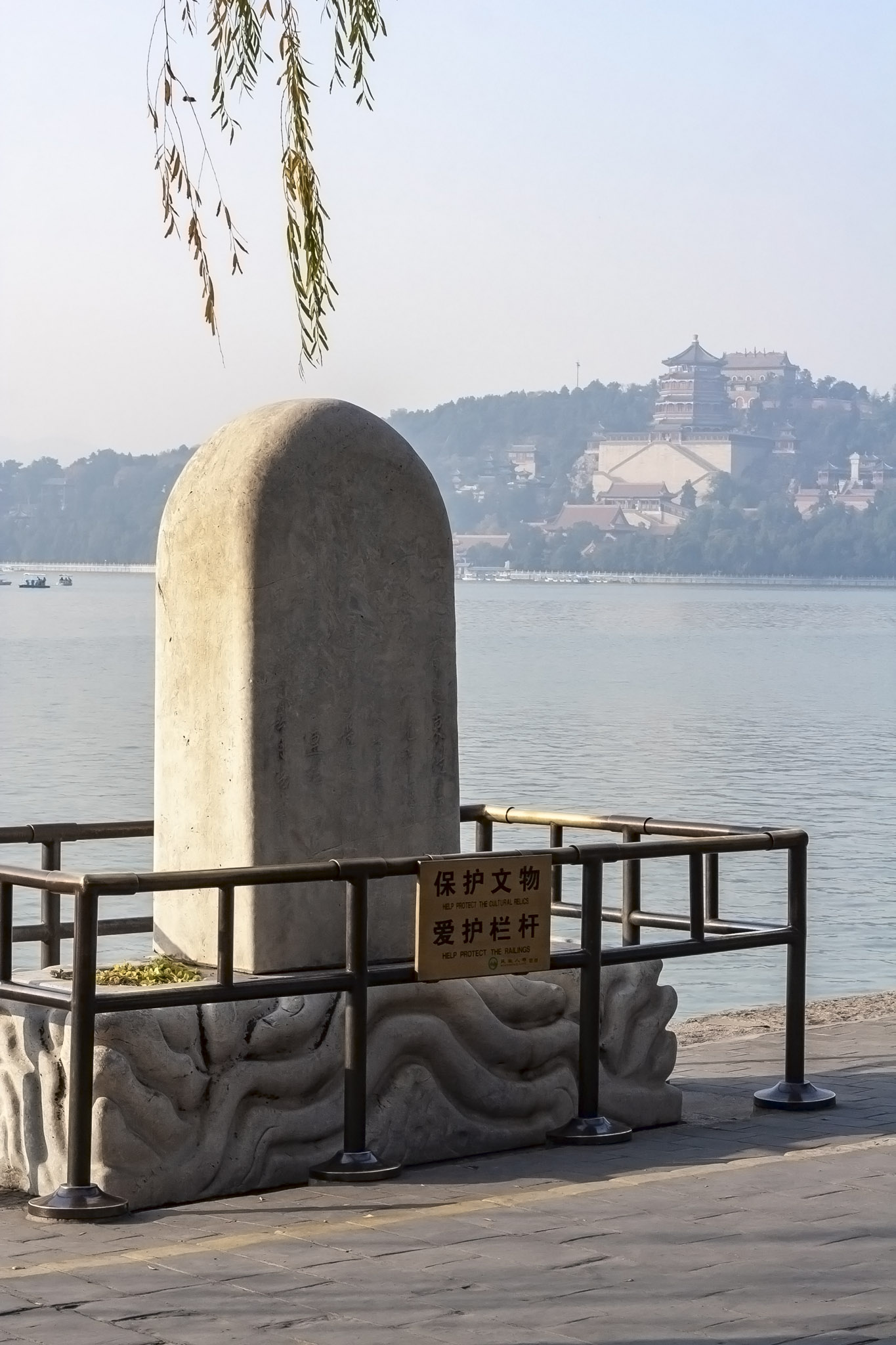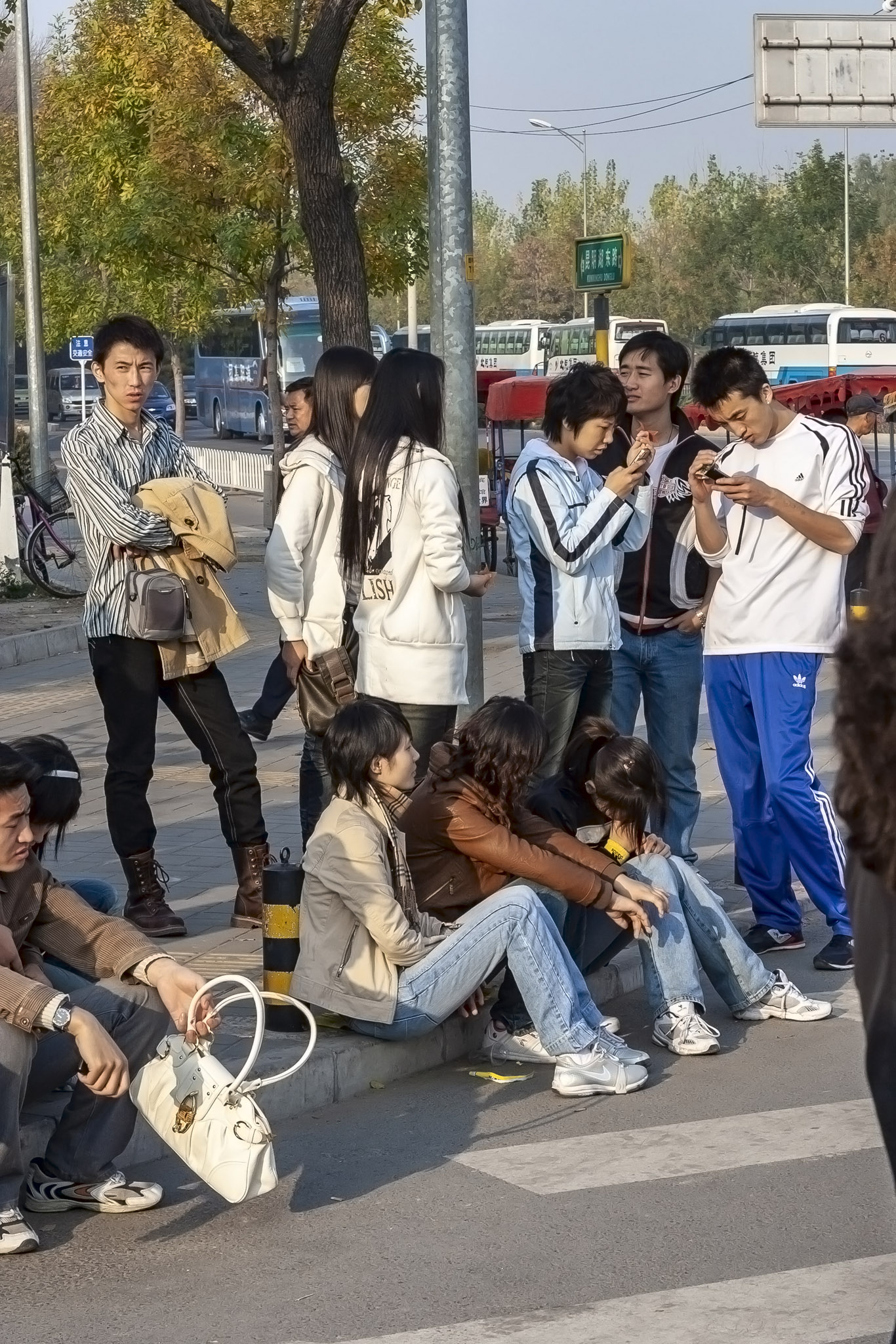The morning had seen us pay a visit to the Great Wall of China to the north of Beijing and upon our return to the city and a stop for lunch we were then whisked off to see the Summer Palace, more-or-less in the northwest corner of the sprawling Chinese capital.
A little bit of history of the Summer Palace because everyone likes a little bit of history just before they see all the pretty pictures and get some good old-fashioned wanderlust coursing through their veins.
The Summer Palace can date its origins back to the middle of the twelfth century although at that time it was simply the site of some minor palaces and temples taking advantage of the natural springs and lakes nearby for pleasing views. It wasn’t until the Qing dynasty and late into the eighteenth century that serious expansion of the lakes to improve water supply to the city took place and the transformation of the area into a collection of imperial gardens, palaces, and temples as the Summer Palace was completed. The design of the palace grounds was grounded in Chinese mythology with dragons and mountains represented, but maintenance of the complex was high and it soon fell into disrepair.
In the latter half of the nineteenth century French and British forces looted the palace during the Second Opium War. The nearby Old Summer Palace was burned down at this time on the orders of Lord Elgin (son of the other Lord Elgin, famous (infamous if you’re Greek) for his appropriation of the Elgin Marbles for the British government) in retaliation for the Chinese torturing and murdering European and Indian prisoners. The twentieth century saw the Boxer Rebellion cause serious damage to the palace (although it was restored soon after) and, after the Last Emperor (you might have seen him in the movie of the same name) abdicated, the Summer Palace became first private property and then a public park. For a short period after the Second World War the Summer Palace housed the Central Party School for the Communist Party.
The history lesson is over.
We arrived on the eastern side of the Summer Palace and our visit of a few hours was only enough to take in a very small section of the area. You could easily spend over half a day here if you were staying in Beijing. We started off with a visit to the Renshoudian. Also known as the Hall of Benevolence and Longevity this was a collection of buildings – temple, palace, halls with ancient artifacts – around a courtyard garden area filled with bronze sculptures and large rocks called Taihu Stones.
The Taihu Stones and their distinctive shapes are formed by the action of pebbles constantly rubbing on larger rocks through rushing water action creating holes in the larger structure, and were considered lucky. Many were brought to the Summer Palace at great expense.
A prominent bronze sculpture caught many of the tourists’ attentions. This was a Qilin. Often translated as “unicorn” the Qilin clearly isn’t one because I’ve got the ability to count horns and can reach the number two with consummate ease.
You’d be hard-pressed to tour an ancient Chinese site and not see some motif or relief work representing dragons and we weren’t disappointed with some of the stone decorations on show in this first section of the Summer Palace that we visited.
From the Renshoudian we headed roughly southwest towards the lake that makes up most of the Summer Palace landscape. This took us through the Wenchang Pavilion, constructed like a huge city gate and with a nearby hall containing more artifacts.
We didn’t stop at the pavilion as Kunming Lake was our destination. It’s possible to hire boats for personal use, either pedal or electric-powered ones, but there are larger vessels that can take groups of tourists on circuits of the lake too and it was the latter option that our Princess Cruises-organised tour directed us to.
A quick apology here for the state of the photographs of Kunming Lake at the Summer Palace. Beijing is well-known for its smog, although our 2008 visit to China not long after the Olympics meant that pollution levels were pretty low during our three days there. However, with this being November and the sun setting reasonably early in the evening and there still being some smog, even if it wasn’t particularly noticeable to us at the time, a lot of the pictures taken before and during our boat ride around the lake ended up shooting into the low sun coming through smog and reflecting off water. The result is what you’ll see below for a lot of shots: washed-out colours heavily leaning towards the yellow and orange hues, and very little dark detail. As the saying goes, it is what it is.
We boarded a boat not far from Wenchang Pavilion on the east side of Kunming Lake. Looking to the north we could see a large buddhist temple. South there was a long bridge with numerous arches, and we would soon be sailing past both of them.
Our pleasant, gentle circuit of the shallow, artificial lake took place in an anti-clockwise direction so the first sight we passed was the towering complex on the northern shore. This was Foxiang Ge (Tower of Buddhist Incense, or Tower of the Fragrance of the Buddha). This building was one of those burned down by Anglo-French forces but later rebuilt and presently comprises three, eight-sided storeys on a twenty-metre-deep stone base. The temple houses a statue of the thousand-handed Guanshiyin Buddha.
West of the buddhist temple was a very unusual sight. This was the Marble Boat (also known as the Boat of Purity and Ease). Serving as a tea house with fabulous views over Kunming Lake now, this was originally a wooden structure on a stone base but like much in the area was destroyed by arson during the Second Opium War. Its reconstruction took place under the instruction of Empress Dowager Cixi and was likely through funds originally earmarked for rebuilding the navy. Despite its appearance and name, the Marble Boat is still made from wood but is now painted convincingly to resemble stone. It incorporates clever drainage systems that funnel rainwater through hollow columns.
The lake with three islands is important symbology in China and as we continued our scenic boat ride around the lake we saw numerous bridges connecting those islands. Interestingly, each bridge was very different in design. Of the smaller bridges that we saw the one that stood out most was Yudai, known as the Jade Belt Bridge. Made from marble, its shape is designed to resemble the simple bridges of the southern Chinese countryside but its unusually high clearance was a deliberate feature to allow the Qianlong Emperor to pass under it on his dragon boat.
The largest of the bridges on Kunming Lake is visible from pretty much any point along the lake’s shoreline. Shiqi Kong Qiao gets its name from its design, the literal translation being Seventeen-Arch Bridge. The bridge is one hundred and fifty metres long, making it the longest bridge in any Chinese imperial garden, and it connects the mainland to Nanhu Island. The railings on the bridge incorporate five hundred stone lions in different poses. A variety of halls, temples, and towers dotted the small island, each filling a scenic location on the landmass in which to enjoy the views of the Summer Palace in every direction, and as we gently motored past Nanhu on its north side we passed Hanxu Hall which directly faces the Buddhist tower on the shore of the lake.
Stepping ashore we had time to see one more interesting item before departing. The Kunlun Stone Tablet is inscribed with a poem written by the Qianlong Emperor and describes how the shores of the lakes changed during his years of coming to the Summer Palace and especially enjoying his time on and around Kunming Lake.
And that brought our time visiting the Summer Palace in Beijing to a close with just a short wait outside the main entrance while we waited for our bus to find us. It was a short visit of only a couple of hours that really barely scratched the surface of what there is to see at this tourist spot. If I were returning now then I’d like to have spent more time in the buildings looking at the artifacts on display and a look inside the imposing Buddhist temple would be a must too, but as a taster of what to see and as part of a combination of historical trips in one day in the pre-cruise package hosted by Princess Cruises then this was a fantastic trip.
We would have just one more day in Beijing before our cruise on Diamond Princess but it would be a very full one indeed.
